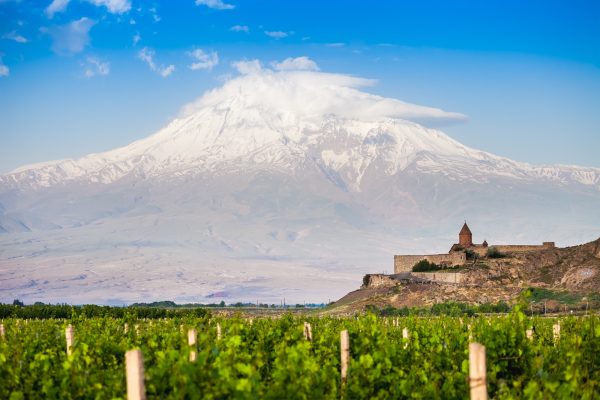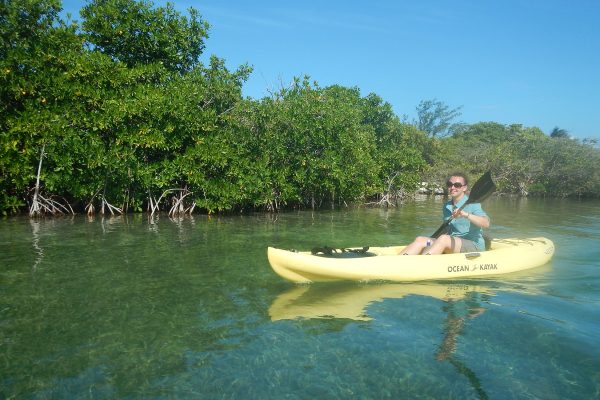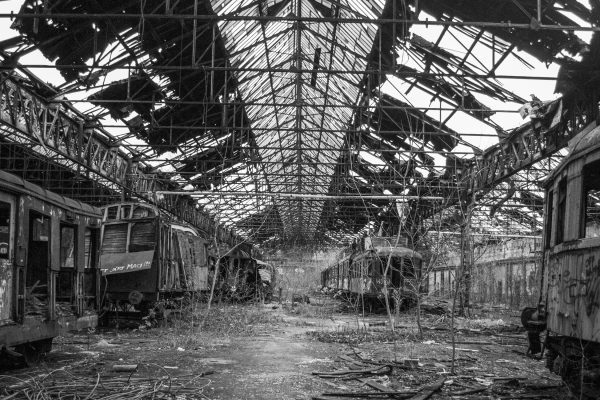Trip duration: 32 days | Approx cost: £2,000 | When: July
Doinit factor: This is a 10,000 mile road trip across a third of the planet.
For over a decade the Mongol Rally has attracted adventurous souls to make their way across one third of our Planet in a wholly unsuitable vehicle. After planning and even hoping for a number of years that I would be one of those souls, testing my determination on such a journey, it was not until the 10th anniversary of the rally that I would finally become part of this Mongol Rally fraternity.
Since my return I’ve been asked many times the inevitable question -How was it? And that’s actually quite a hard question to answer. It was amazing, it was great fun, at times it was scary, other times it was boring. There were times I thought I could stay on this rally forever, other times when I got homesick, and actually sick. We laughed, sweated and had diarrhoea. So, how was the Mongol Rally? It was a year’s worth of emotional ups and downs thrown into an intensive and uncomfortable month, one that I will remember and certainly cherish for the rest of my life.
As far as rallies go, the Mongol Rally is the top dog. The boys at the Adventurist (organisers of the rally) seem to have cracked a winning formula, one which no doubt chucks them a fair few quid, but so what? While initially sceptical of parting with my entrance fee, I would finish the rally happy that I did so. The rally fuses adventure with a wee bit of capitalism; there are sponsors, there are parties, it’s quite a social experience which bonds team mates and strangers in a way few experience.
The following is my attempt to summarise my experience on the 2014 Mongol Rally.
The route
There’s a number of different routes teams can take. Some teams opt for the more straight forward route through Russia others will take in the Balkans before moving East. The more adventurous will head through the “Stans” with some opting to go though Iran. The point is – it’s your adventure you can take any route you want.
Our Route: 17 Countries | 32 days | Just under 9,982 miles |25 petrol stops | 5 punctures | 5 police stops | 1 over heat | 1 missing exhaust | 5 rolls of toilet paper
And we’re off..
Day one
Our official starting grid is at Battersea Park, London, followed by a circuit taking in some of London’s most iconic landmarks. There are over 200 cars making a nuisance through London on this early Sunday morning. We drive past the Houses of Parliament, Trafalgar Square and Tower Bridge as crowds lining the pavement applaud and wave us good luck as we embark on the adventure of a lifetime making our way to the Dover Ferry.
As we make our way through familiar Europe, social media becomes a useful distraction as teams post updates and pictures of their travels so far. It’s a great way to break the monotony of the long drive along Germany’s motorways. Already we’ve seen there’ve been breakdowns and accidents, the news keeps us entertained as we come to the end of our first day. With not much of a plan we spend our first night in a hotel in Nuremburg, but we can see from the Facebook updates some teams opt for a night in Belgium , whilst others haven’t even made it to Dover.
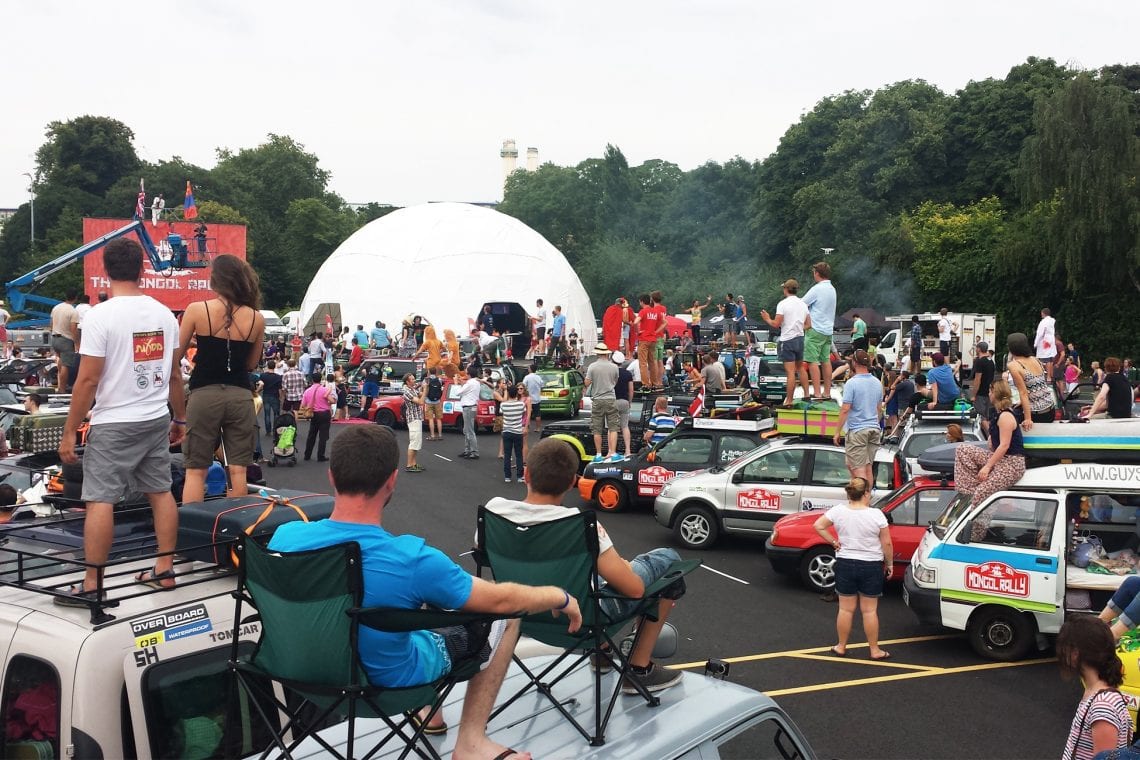


Above: There’s a party atmosphere as we leave London
Czech out all the beer
Day 2, 3 & 4
The next day it’s not a hard drive to the Czech Republic. My brother and co-driver Dan remembers hearing somewhere that it’s possible to actually have a bath in beer – yes, a beer bath! For us this is a must. We find some Wi-Fi at a petrol station and check out what google has to say. Result: it’s actually quite close to our route only requiring a short diversion. In the small town of Chodova Plana, for the price of 25 Euros you can be treated to a bath tub filled with beer, minerals and herbs. It’s a pretty cool experience and a unique way to have a couple of beers (included in the price). They say their recipe is good for your skin and they suggest not showering afterwards, advice we take. Surprisingly, our skin does feel soft and not sticky at all, we feel refreshed and ready for our onward journey.
The Czech Republic is famed for its beer so we strategically decide it’s a good idea to place ourselves close to the city of Pilsner, home of the Plinzner brewery and the birth place of Pilsner Lager. Funnily enough other teams have the same idea including a couple of Welsh lads in a Suzuki Jimny who, unknown to us at the time, will be traveling with us in convoy for the next week or so. A tour of the brewery is a must; you’re taken into the ancient cellars and see the massive barrels of beer as well as the modern conveyer system used for bottling and packaging. After the morning tour it’s time to make our way south… to the official Mongol Rally ‘Czech Out Party’.
The Czech Out Party is the first chance for teams to all converge in one place after the start, get to know each other, exchange stories from the first few days of the rally and talk about the upcoming days and weeks. It’s also a good time to drink loads of beer and have a dance in an old, abandoned military base.
From the Czech Republic it’s a long day’s drive heading south east, occasionally passing other teams, or other teams passing us. It’s a hot summer, we roll down the windows and open the sun roof, listening to our eclectic selection of music as we make our way along never-ending highways.

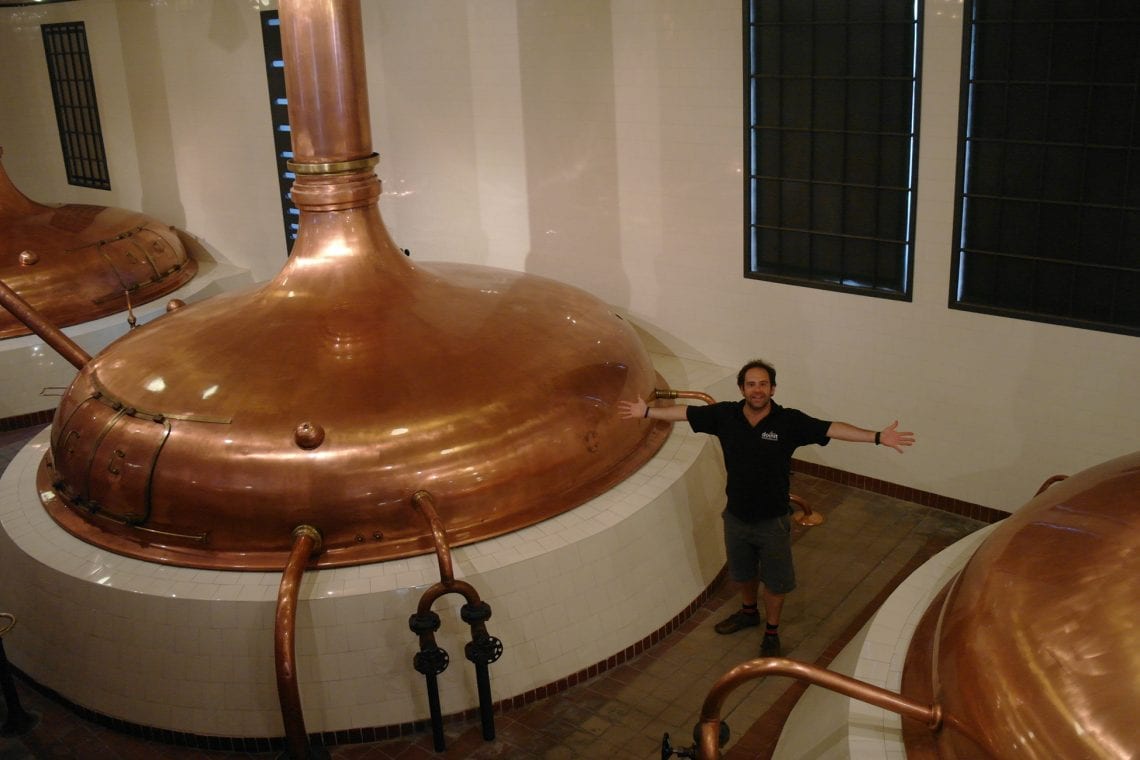
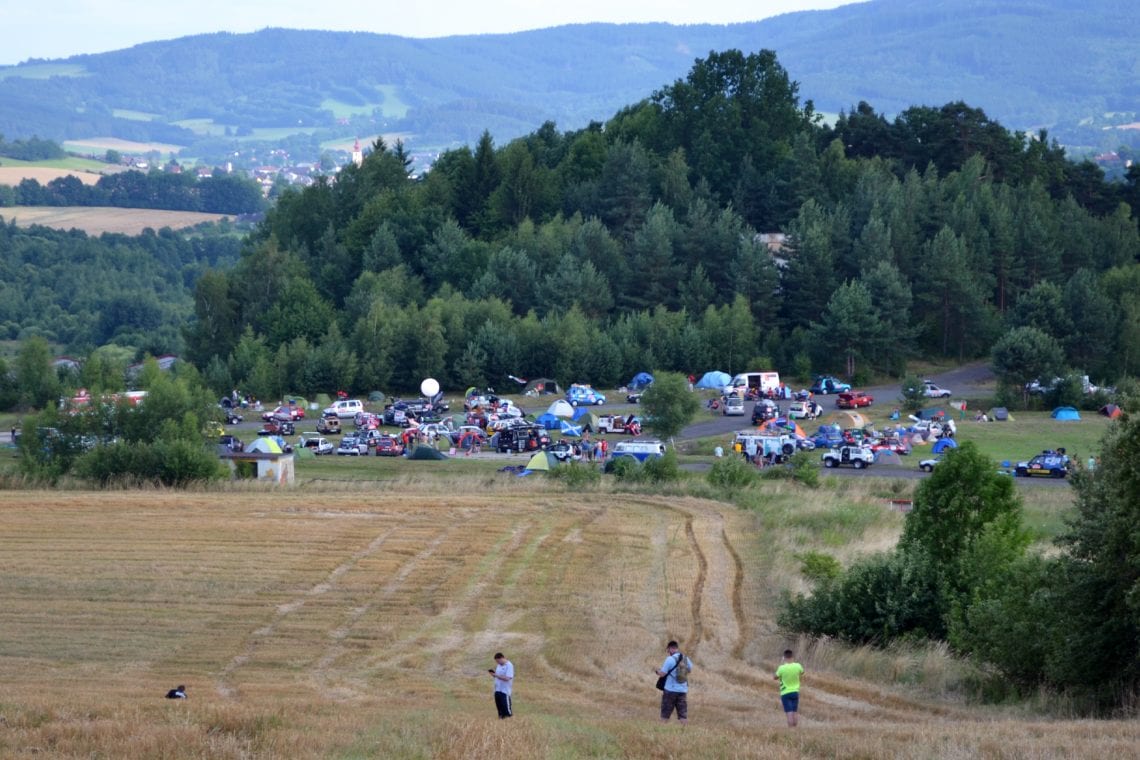
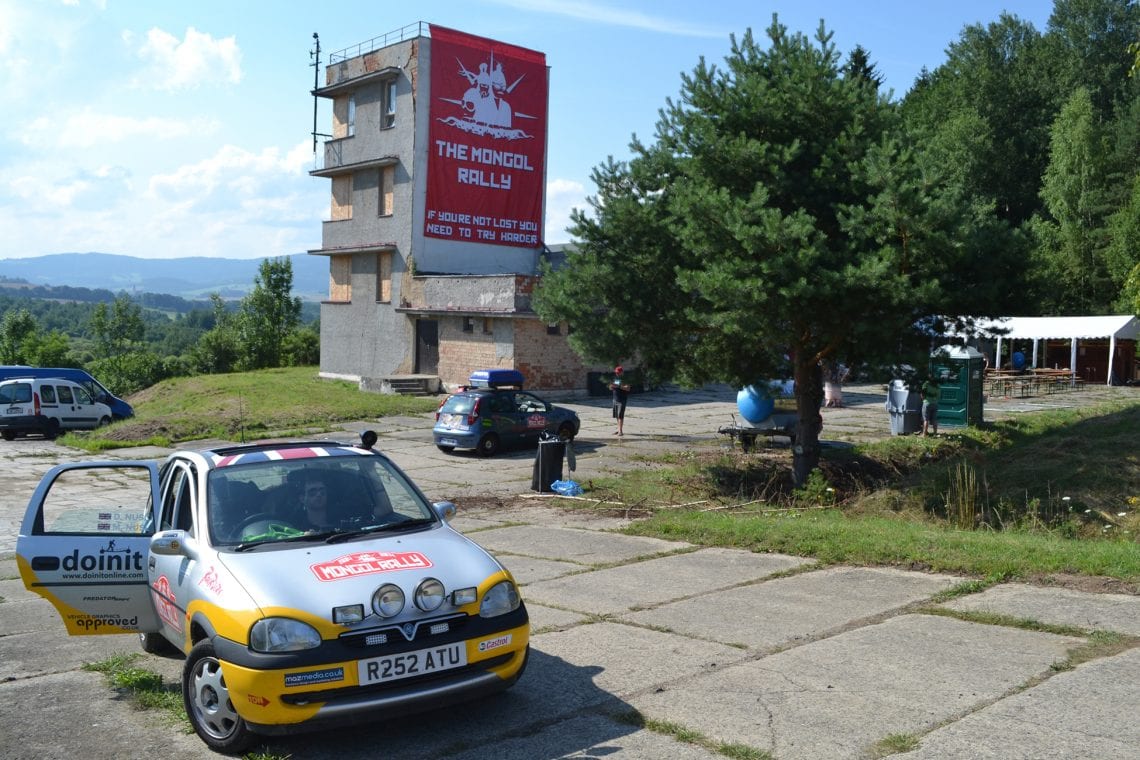
Above: Having arrived in the Czech Republic we are quick to mind a beer spar and later have a tour of the Pilsner brewery before heading to the czechout party
From Transylvanian to the Black Sea
Day 5
We camp just outside of Budapest, but don’t stick around for any sightseeing, instead we continue into Romania and the Transylvanian town of Sibu for another get-together with teams. But there is ulterior motive for this central location. Not far from Sibu is one of the most spectacular roads in the world, The Transfăgărășan highway. Only passable for a few months in the summer, this road is a testament to what the communist party can do when it puts its mind to something – even moving mountains. The highway was built between 1970-74 as a military route and passes between Romania’s highest peaks. Its highest point is 2,034 metres. At these heights the temperature gets cold but the landscape is stunning and the driving experience is a must for any driving enthusiast. Dan takes the car through hairpin turns and twists up and down the mountain side and through tunnels. Sitting in the passenger seat I see his concentration as he eagerly changes gear to the appropriate ratio (for the most part) – he clearly is in the zone and I can see in his face he is imaging that he’s Michael Schumacher at the Monaco Grand Prix.
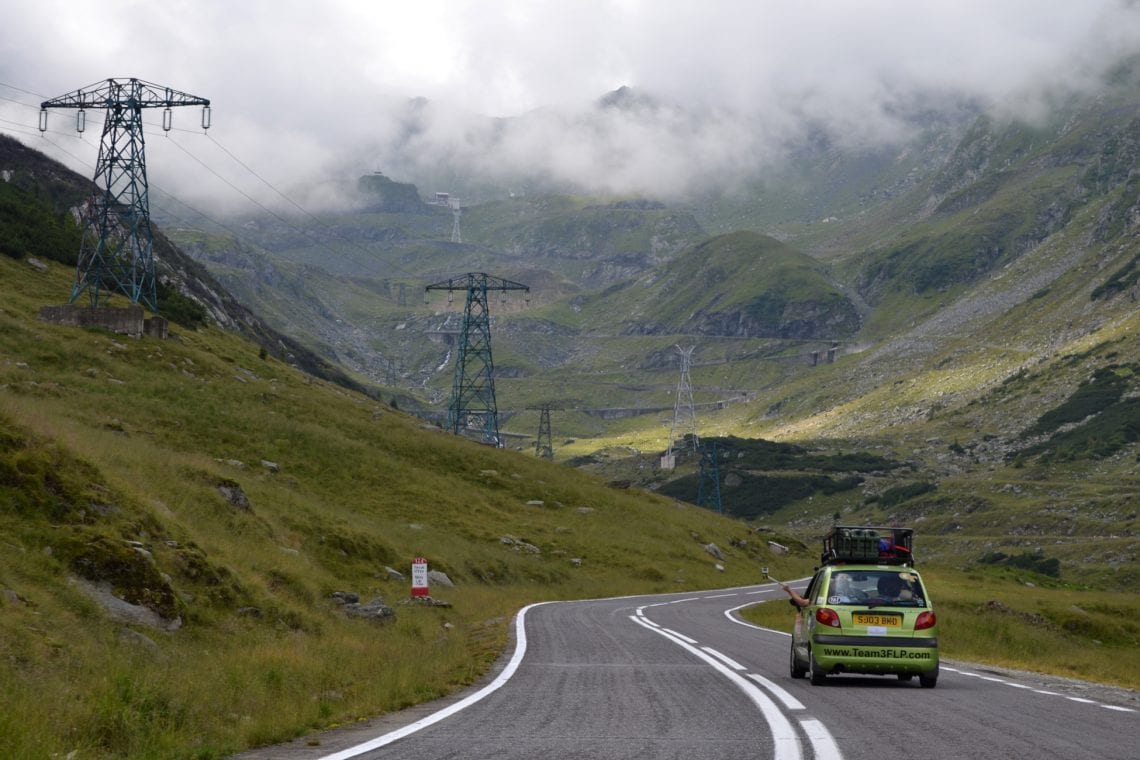
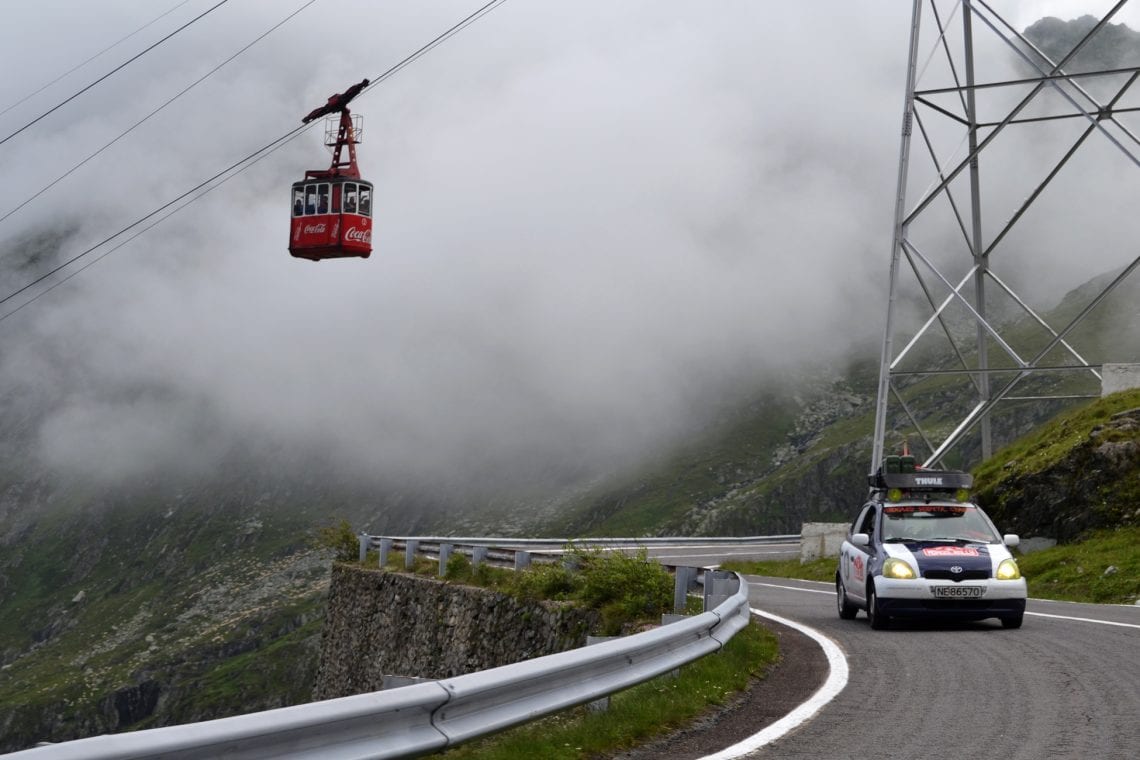
Above: An epic drive along the Transfăgărășan mountain road in Romania
Once we’re through the mountain pass, reality sets in. We’re still a long way in from our next destination – the beach! A couple of miles from the Romanian-Bulgarian border and situated on the coast of the Black Sea is the small town of Vema Vecha. Riddled with open roofed bars and stages this is the Romanian version of Ibiza, but cheaper of course. We arrive in late afternoon, the sun is pounding, we’re sweating – there’s only one thing for it, a cold beer and a dip in the sea. This is the most refreshed I have been in days.
We’ve checked into a “trendy” campsite, close to the beach and party strip. At night the main part of town fills with party goers, loud music blasts out from speakers in all directions, oil drums burn as people dance the night away on the beach and drink the popular home-made drink only know to us as ‘Gypsy Tears’. The party rages on into the early hours and the fireworks we’ve brought along are set off high above dancing crowds. The hot night makes it an uncomfortable sleep – not helped by the bass from the parties still going on the beach or the drunken passers-by returning to their tents.
In the morning, we exchange stories of last night’s shenanigans before we head to our next and final European (sort of) stop, Istanbul. It’s an uneventful day, mostly non motorway through Bulgaria. For the first time we come across a real border crossing as we enter into Turkey. Rather straightforward, but long enough for me to whinge about the pace of the checks of the necessary paper work needed to bring a car into the country. Little did I know then, that this would still be one of the faster crossings.
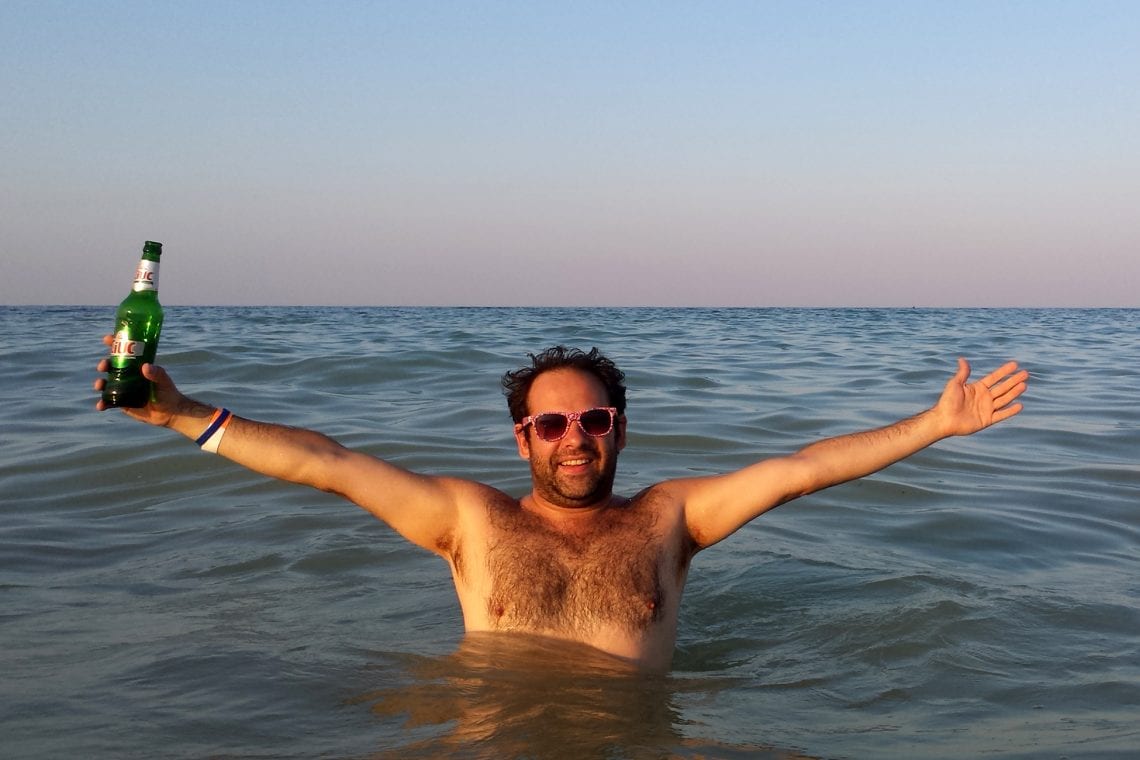
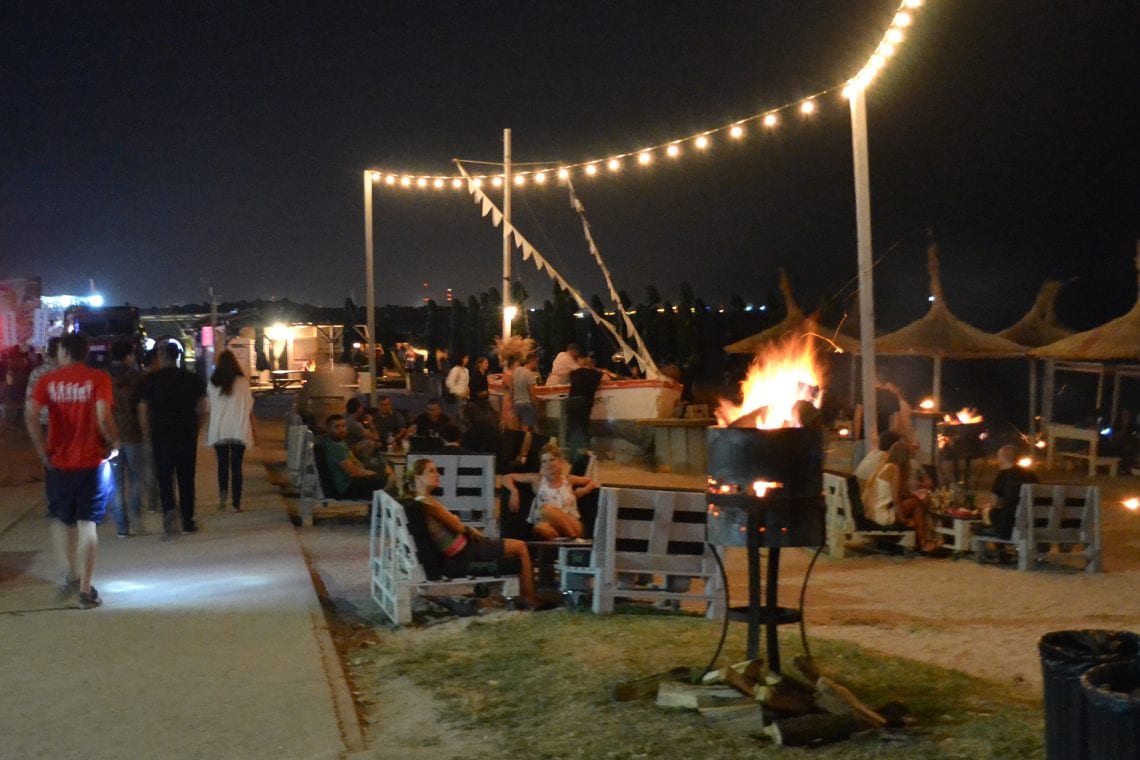
Above: A well earned break in Vama Veche
Big Turkey
Days 6,7 & 8
About 9 hours after we set off from Vema Veche we arrive on the outskirts of Istanbul. It’s getting dark, the traffic is insane, the roads confusing, and we’ve no sat nav. Istanbul is a huge city and we’ve no idea where we’re heading. Trucks and bus drivers weave in and out, the road systems of under and overpasses seems to make no sense – the flow of traffic is fast and night is beginning to set in fast. I’m sure we’re going to have a serious accident. Somehow after over an hour of driving around we find ourselves, by sheer luck, in a central part of town. Definitely time for a beer and a kebab before we settle into a cheap and uncomfortable hostel. That night I think to myself how amazing it is to have driven from London to Istanbul in a £100 car, and this is still the very early days of the rally.
The next morning it kind of dawned on me that Turkey is huge so I pop into a souvenir shop and pick up a map of Turkey. I realise if we are to have any hope of crossing it we’re going to need a map. We run our hands across the various illustrated roads and decide it’s realistic to try and make the city of Samsun, slightly under half way through our route through Turkey. The Turkish motorway system for the most part is pretty good and roads are in better condition than in parts of Eastern Europe. Rather sadly we’ve seen a number of dead turtles who attempted to cross these roads. Samsun is a much more manageable city than Istanbul and it’s not long before we find a hotel for the evening, pop out for dinner and even get an ice-cream along the water front. This is only a quick night stop for us but the town has its charm.
It’s our 8th morning and again it will be a day of long driving but with a difference; rather than taking the most direct route to Georgia we plan on a detour. We’re told close to the Armenian border lies an amazing city abandoned centuries ago called Ani and a UNESCO World Heritage Site which attracts very few tourists. Intrigued, this is our destination.
In far eastern Turkey, the road takes us south through some great mountain landscapes. Like in Romania, human ingenuity has carved up the landscape to allow travellers to pass, with spectacular views. Darkness falls and the ride gradually becomes quite scary as we traverse the mountains. We’ve somewhat miscalculated so as it turns out we won’t make Ani tonight but fortunately the large city of Kras is not far from Ani. So at around midnight we check into the least dingy looking hotel we’ve come by. In the morning we’ll visit Ani.
The city was founded in the 5th Century but has lain in ruins ever since 1319. Back then it was known as the city of 1001 churches. Even after 700 years, the ruins are magnificent. Churches, mosques, fortifications still leave a remarkable impression. It’s nice to spend the morning walking around such ancient history. In the distance we just about see look out towers, unsure whether these are Turkish or Armenian. The border between these two nations has been closed for years. We will have to double back on ourselves as we head to Georgia.
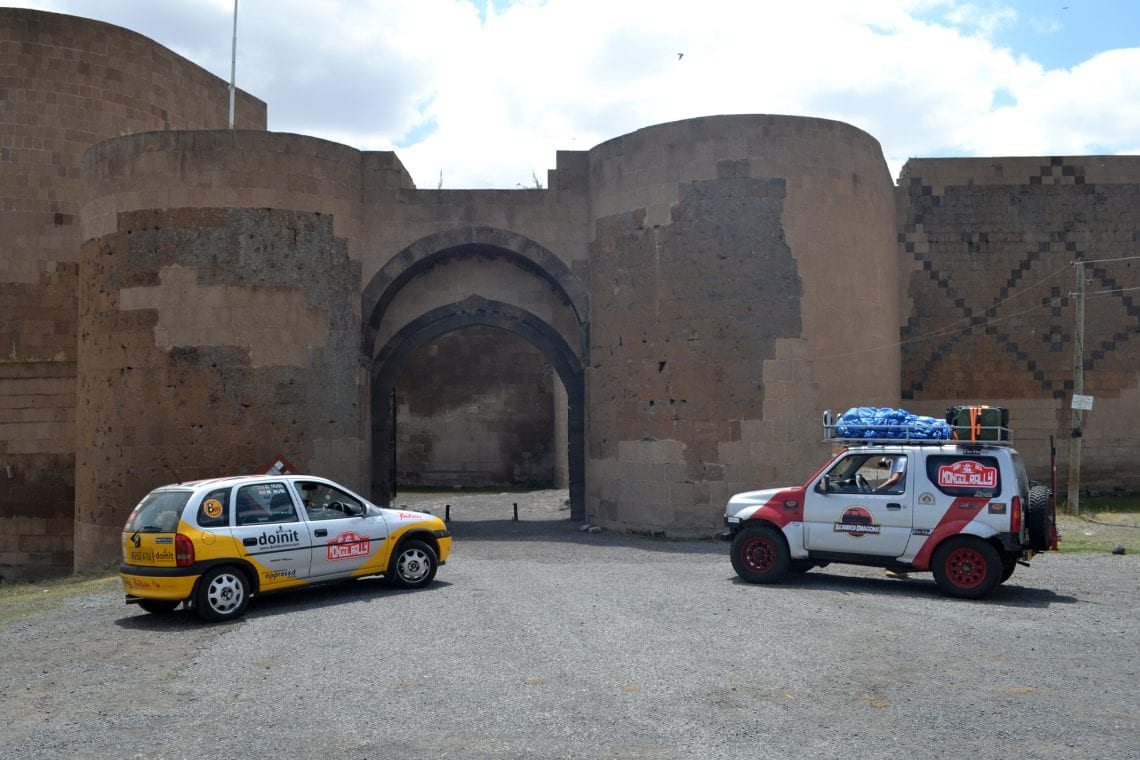
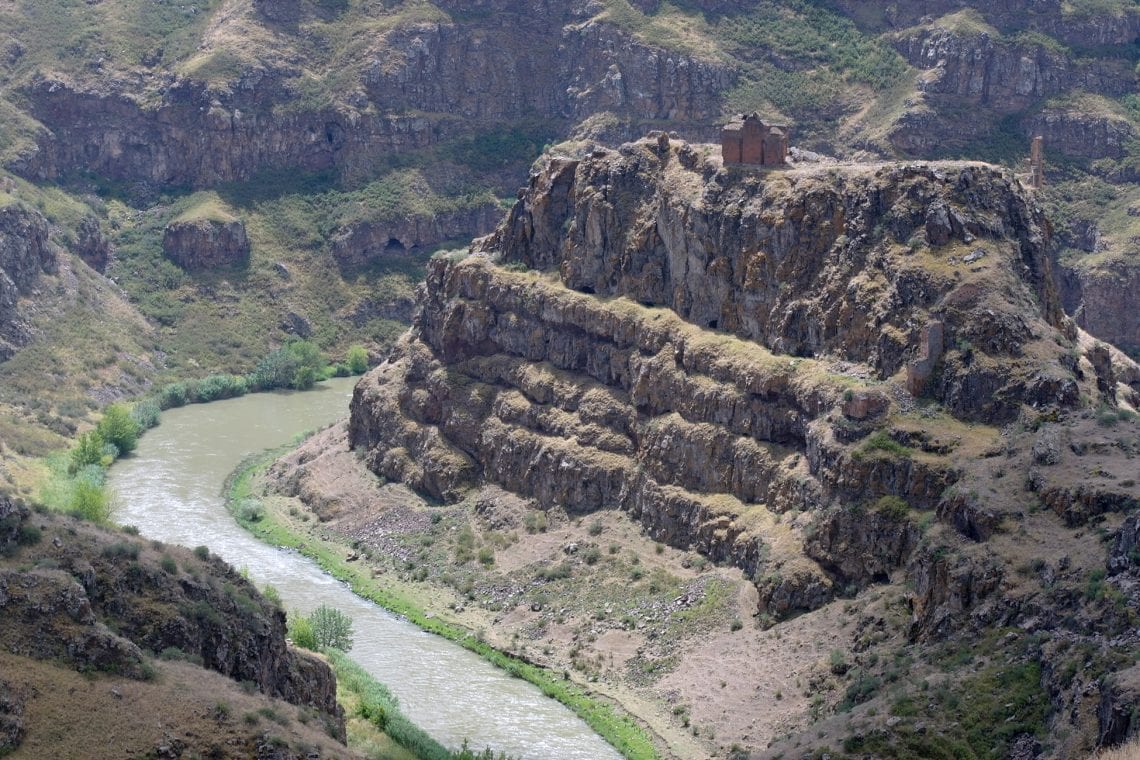
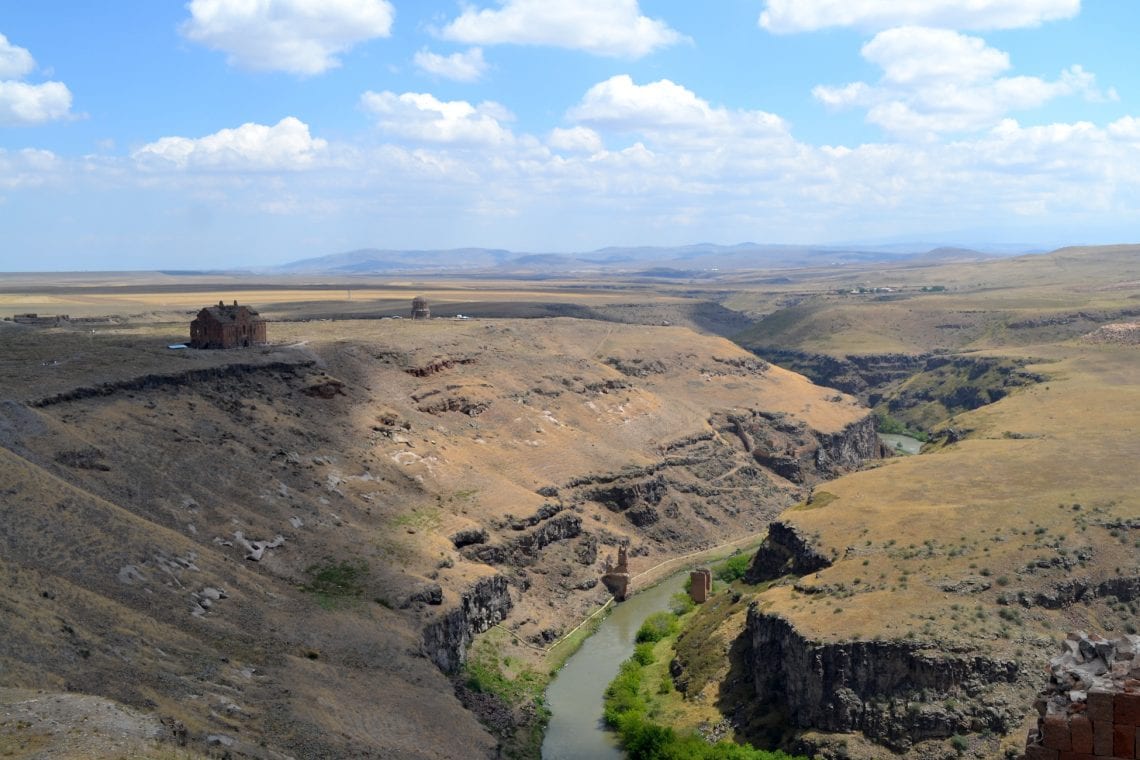
Above: A visit to the ancient site of Ani is a bit of a detour but well worth it | There is hardly one else about as we spend the morning exploring the ruins
Gorgeous Georgia
Days 9, 10 & 11
Entering Georgia is surprisingly straightforward and it’s not long before we’re driving through the lush green, mountain landscape and white-water rivers. We pull up alongside one of the many roadside huts for some dinner. With the massive language barrier it’s a case of playing charades and imitating a chicken to indicate to the hostess what we want.
We‘ve made the capital of Georgia, Tbilisi. Simply just by driving into down town we’re engulfed by the charm of this place. Churches on the hillside lit up in a tungsten glow. The city is dominated by the Narikala Castle atop a steep hill. The city also has free Wi-Fi which makes finding a centrally located hostel quite easy. Before long we’re out on the town. Fed up of driving, we decide to have a rest day here. Tbilisi is not as I imagined it, historic churches dot the sky line, and quaint pebbled roads and alleyways are lined with trendy bars and night clubs. Shops sell traditional produce, particularly Georgian wine which is regarded very highly. Before buying any, it’s customary to try a few swigs in the shop with a complimentary explanation on how traditional Georgian wine is made. We spend the next day walking around town, taking the cable car up to the castle. The views of the city and its meandering river are great.
Georgia’s made an impact on us and for the first time we feel that we’re almost on a relaxing holiday rather than an adventure rally across a third of the world. Our final night in Tbilisi is in one of the city’s Sulphur Baths, open all night. The tradition is to swap between freezing and hot baths, spending five minutes in each before swapping. We leave feeling extremely relaxed if not smelling a bit eggy.
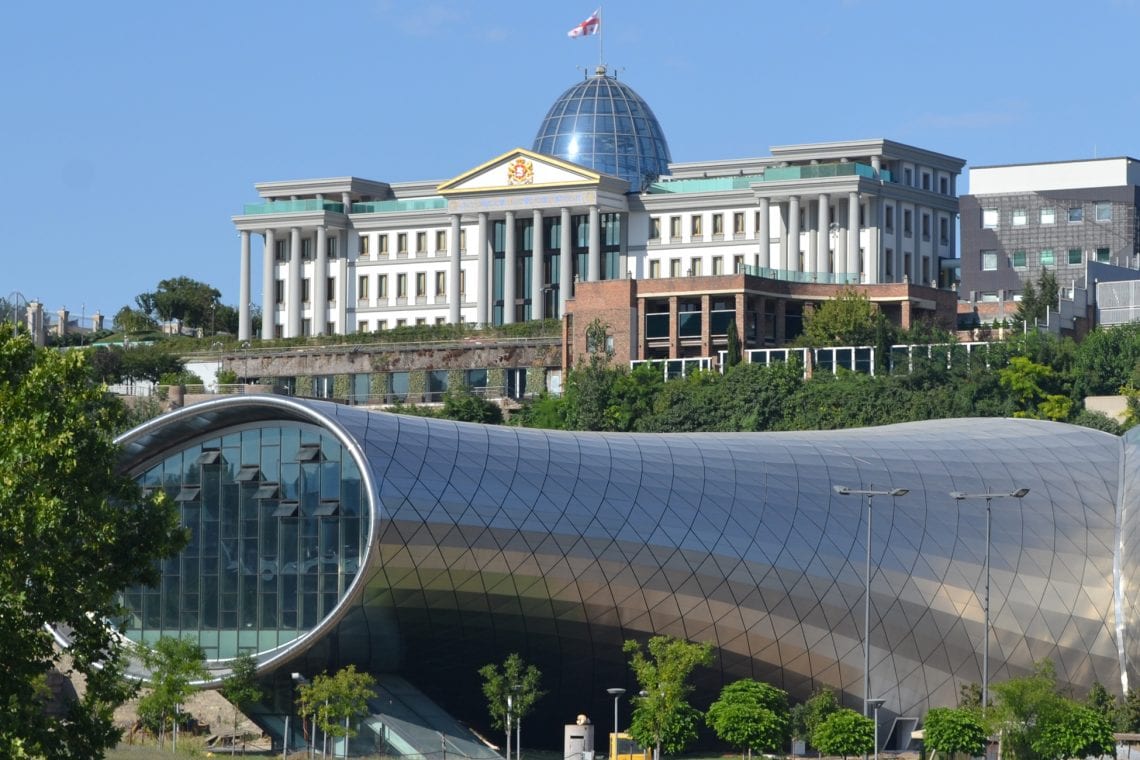
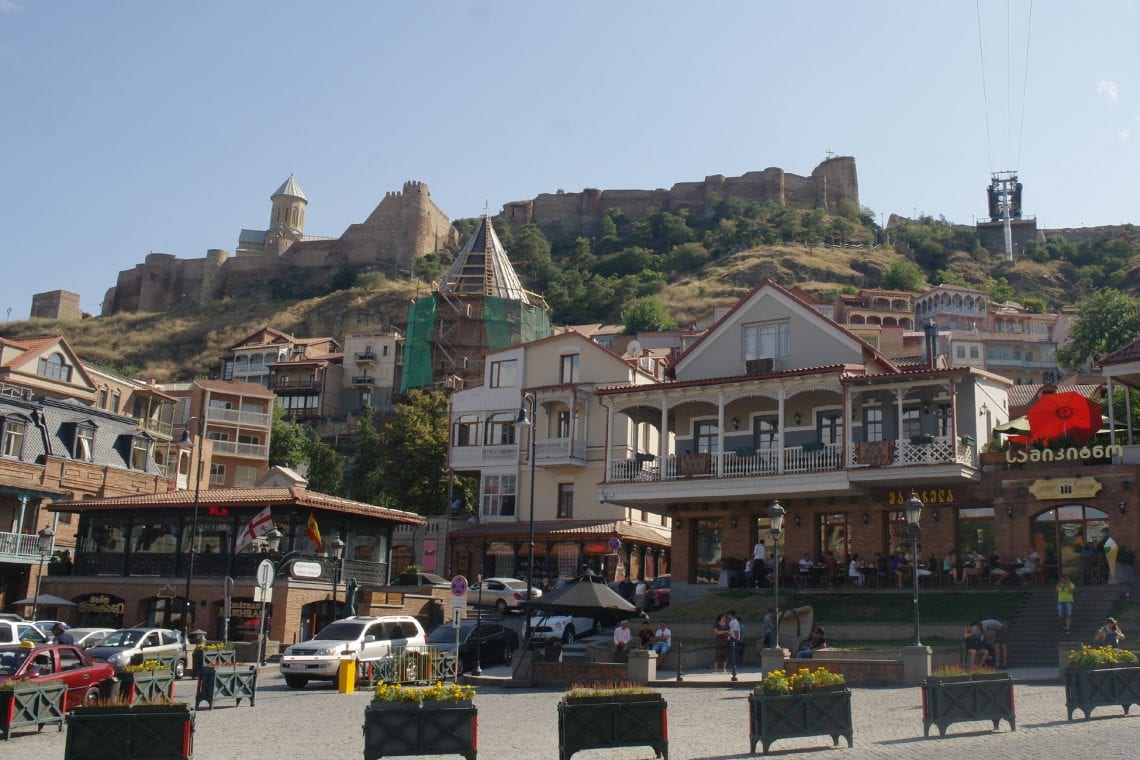
Above: Spending some time exploring Tbilisi
We’ve heard on the so-called Mongol Rally Wire that one of the most direct routes to Azerbaijan has unbearable waiting at the border crossing with cars waiting up to six hours to cross. So we’ve found an alternative crossing further north which should be a little more low-key. What we discover on route is that while a map and even google may show a route, it won’t tell you the condition of the road and it turns out our road isn’t a road at all. After two hours of driving over fields, rocks and dirt, we come across a van driver who signals to us to turn back and to follow him. We’re not far from Azerbaijan but he gestures that our car is unlikely to make it much further. Reluctantly and frustratingly we agree to follow him an hour back tracking until we reach a tarmac road, a junction I’m sure we passed some time earlier. We’ve done a massive circle.
We’ll head to another border crossing not too far away and cross in to Azerbaijan. It’s late afternoon before we finally reach the border crossing. We’ve heard this isn’t going to be the most pleasant of experiences and we have a nervous chuckle as we drive past the large sign overhanging the road; it reads “Azerbaijan Border – Good Luck”.
As we thought, the border bureaucracy is tiresome, the heat and the waiting are tedious and it’s hours before we’re allowed to proceed into Azerbaijan. It’s early evening and the sun is low on the horizon as we make the long drive to Baku. Continuous roadworks and heavily traffic make this a relatively hazardous section of our journey. The main highway to Baku is under construction forcing heavy traffic into single lanes very close to oncoming traffic and massive construction machinery making its way to where it’s needed.
There’s no road lighting and the local drivers seem intent on using their high beams, tail gating and randomly pulling off to the side of the road. This keeps Dan and myself on edge and every time an oncoming truck passes us, normally only missing us by inches, we can’t help but think “that’s it… we’re going to die!” Hours pass, my fingers hurt from constantly gripping the steering wheel in fear but we make it to the suburbs of Baku by about 1am and find our hostel tucked away in a courtyard within a block of buildings. Our hosts offer us a beer before bed, we toast to our survival of the past 16 hours of travelling from Tbilisi.
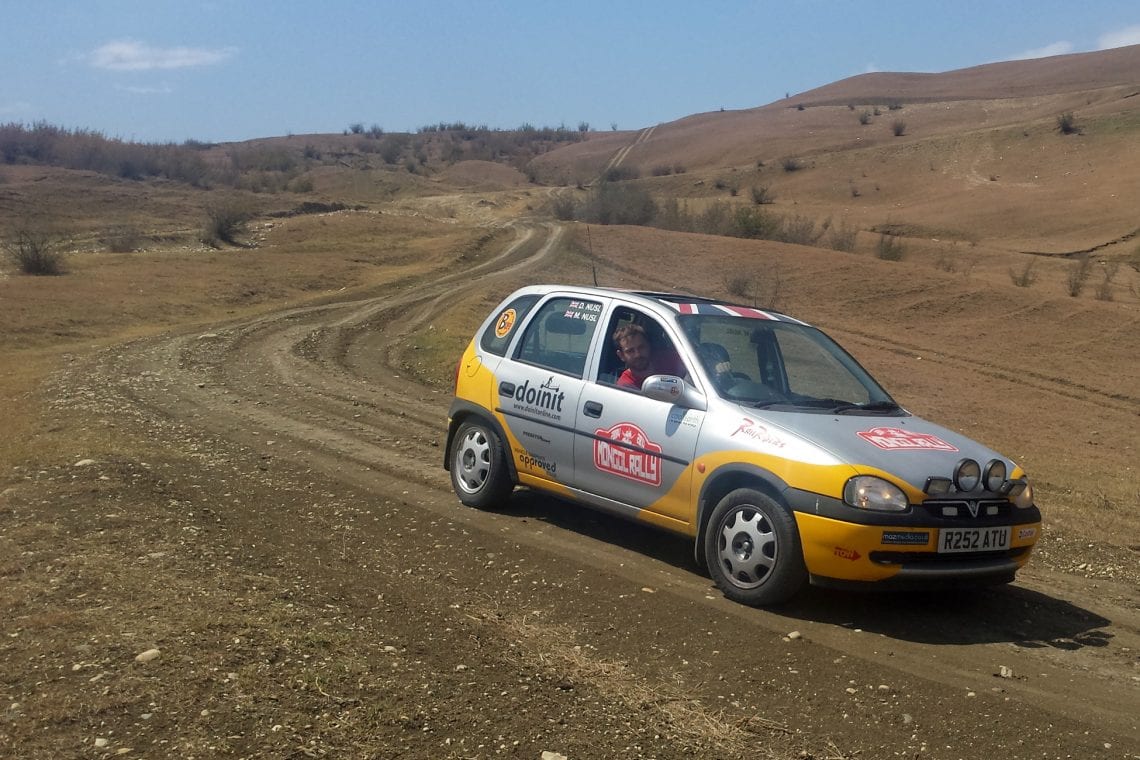
Above: According to google maps this is a main road as we head towards Azerbaijan
How to get a Turkmanistan Visa?
Alot is made of the visa situation, but if you apply for a ‘Transit Visa’ – Date specific and only valid for 5 days it is pretty straight forward to obtain and cheap. In Brief:
- Download Application
- Return application to the Turkmenistan Embassy in London BUT explain you wish to collect your visa in Baku. You’ll also have to submit a itinerary and NOT mention the Mongol Rally.
- Collect your visa in Baku and pay 40USD.
- Checkout: caravanistan.com/visa/turkmenistan
- Get someone to do it for you: www.visamachine,com
Arriving in Azerbaijan
Day 11
In the morning we are so happy that we’re not driving anywhere today. Today is dedicated to collecting our visa for Turkmenistan. Back in London we applied for a Turkmenistan visa, to be collected in Baku. Of course it turns out it is never that straightforward.
It’s not until I get them to call the embassy in London that they straighten the matter out, and we’ve lost valuable time. I have now 30 minutes to get to a particular bank, pay and get a receipt back to the embassy with proof that the money has been paid. I hail a cab, make the necessary trip to the bank and hurry back. We’re issued our visas before the embassy closes for the weekend.
Visas in our passports, this now means we can enter Turkmenistan… if we can get there. The ferry which crosses the Caspian Sea is notoriously known to travellers as being difficult to predict. There is no set timetable, delays are frequent and even getting onboard is not guaranteed. After a number of phone calls and chatter on the ‘Mongol Rally Wire’ we get word there is ferry likely to leave the next day. That’s good news as our visas are time limited, we must enter and leave the country within five days from now. We really don’t want to miss the boat on this.
Unusually, we have some time to relax until our hopeful sailing tomorrow so we’ve the rest of the day to wander around old town Baku. It’s nice enough, but seems somewhat fake, pretentious even. There’s clearly a lot of money in the city. As we walk the streets we hear expats everywhere. The city is clean and well kept, buildings almost designed to be dominating, there are a lot of fountains and trendy cafes. Interestingly it’s not the old town that captures my imagination, it’s far too fake, but it’s the Flame Towers of Baku which I think are rather elegant. They’re of impressive architectural design and once the sun sets an impressive, patriotic lightshow emanates from the building.
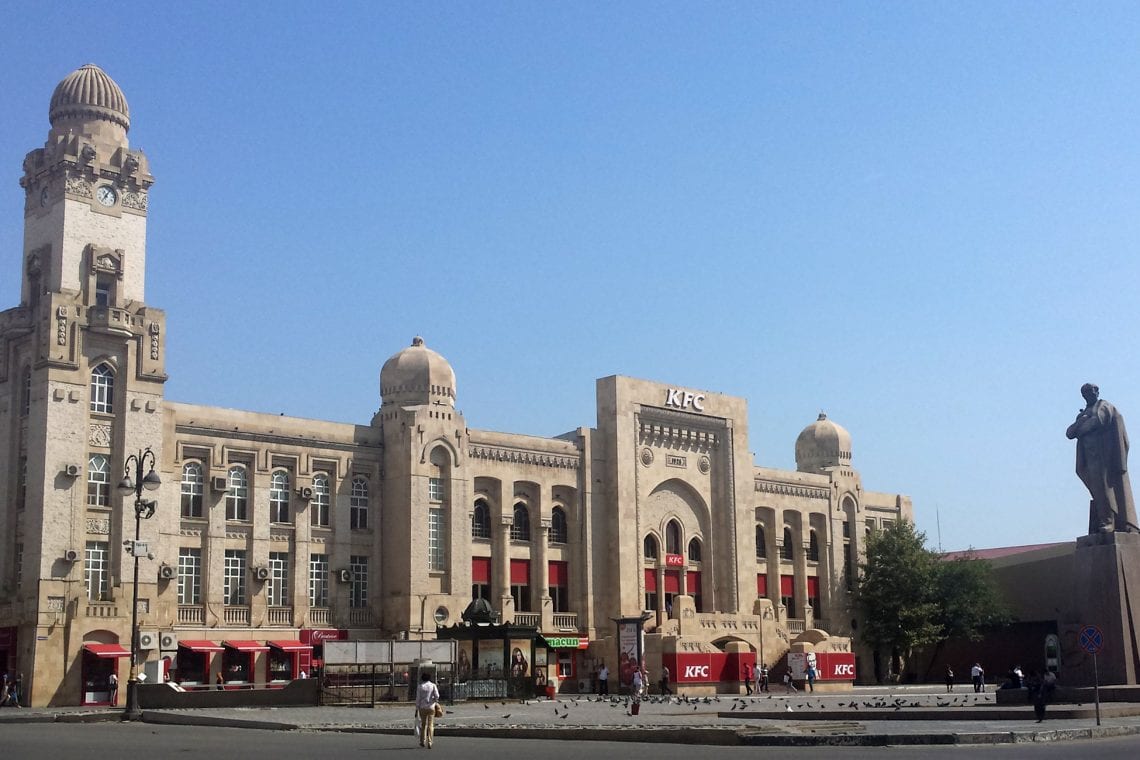
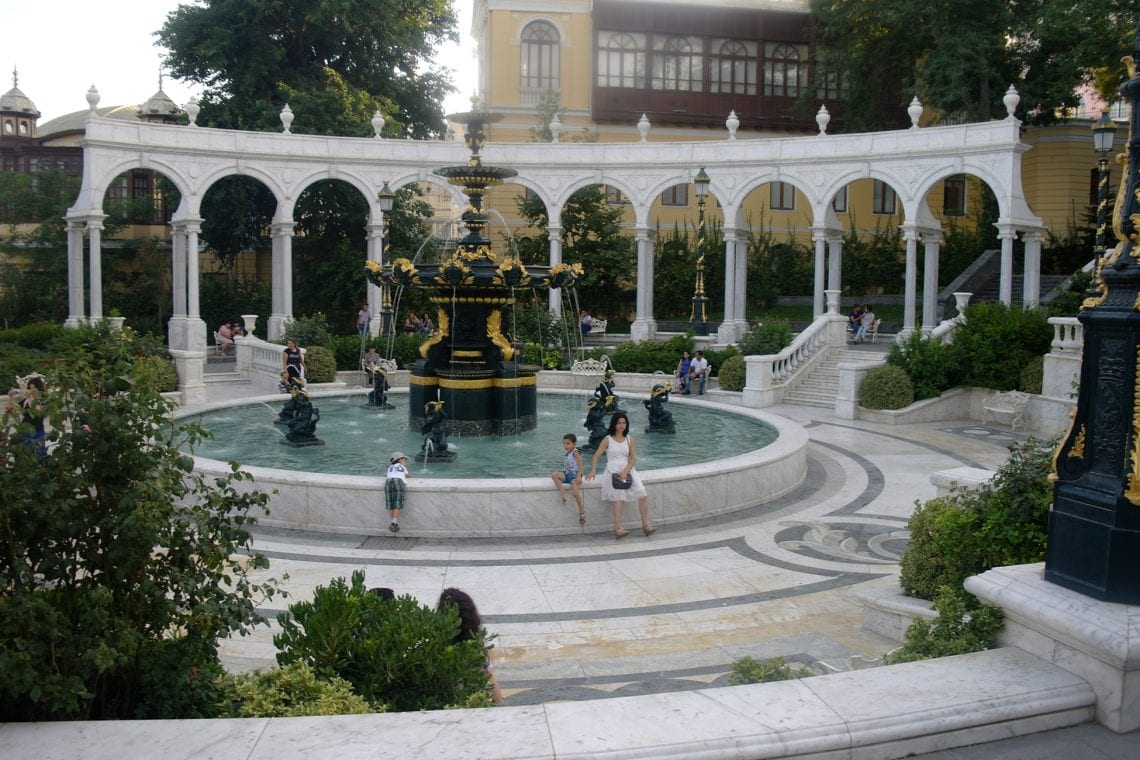
Above: In Baku we visit the worlds largest KFC | There’s plenty of fountains and neo Greek architecture | The elegant flaming towers light up the city as dusk
Ferry across the Caspian Sea
Day 13 & 14
Ferry day is upon us. The norm is to head north of the city to the docks and find the small porta cabin which is the ticket office, pay over the odds and hope the ferry departs. There are a handful of people waiting for the ferry but it’s a very sleepy place. First we’re told the ferry “may” come today but an hour later we’re told the ferry “will” be departing today. After waiting around we’re told to drive into the customs area, where we spend four hours sitting around in the car with no shade in 40 degree heat as cargo wagons are loaded on to the boat. When we are finally allowed to load we’ll wait for another 6 hours before the boat actually lifts anchor and sets sail.
The cargo ship has no shops, restaurants or entertainment, it’s dead with only a handful of passengers. There is no air con and at the peak of summer there isn’t the slightest hint of a breeze. We meet a large, hairy gentleman who invites us into the galley to show what food may be available. He lifts the lids of various pots and we point to some kind of stew with rice. We’re also delighted to see the fridge loaded with bottle beers, pity the fridge isn’t on, but even a warm beer can be refreshing in this heat. The night ends in a dispute over the bill with the gentleman who plans on lining his pockets. A price is negotiated but a lesson learnt – and we avoid the galley for the rest of the voyage.
The following 18 hours or so are quite frankly pretty horrible. The heat has taken its toll on Dan, he’s not feeling well and my urine is as dark as I have ever seen it. We’re drinking as much water as we can and also using the only overflowing toilet on the vessel regularly. Boredom on the slow ferry takes its toll too. Sure we’ve bought books but are simply not in the mood to read. We’re sticky and covered in engine oil which covers the surface of everything on this ship.



Above: The ferry across the Caspian Sea is an unpleasant experience and there appears to be only one blocked toilet for all the passengers
At around 11pm we finally dock, but it’s still over an hour before we can eventually disembark ship. We’re tired and not really in the mood for the next three hours of processing by the customs. This is quite bizarre. After what seems like ages filling out various forms, searching of bags and declaring our route and departure point, the passengers are allowed through but the drivers are asked to go back and forward from one booth to another. I sit outside watching in bemusement as Dan goes from official to official. We lost count after about 13 individual checks.
It’s ridiculous o’clock in the morning when we’re finally allowed to continue on our pre-approved route and everyone is too tired to drive. We make our way a little past town and wild camp on the side of the route for a few hours kip.
Travelling through Turkmenistan to the doors of Hell
Day 15, 16 & 17
The next day is a long drive to the capital of Turkmenistan. Ashgabat is an interesting city. The roads are busy with clean, white cars (it’s illegal to drive a dirty car – we were breaking the law). Traffic is heavy and fellow drivers shout out of their windows welcoming us, asking where we have come from, where we are going. I feel quite welcome; any car which passes us offers us a wave, a smile or an inquisitive look. The busy roads and one way system does prove rather frustrating as we drive about trying to find a hotel. Our Lonely Planet guide is not being particularly helpful, but the drive around town does allow us to see the huge marble buildings lining the boulevards, well maintained lawns and the water fountains as far as the eye can see. I would later learn that Ashgabat has more water fountains than Las Vegas.
After a few dead ends we find a hotel which will accommodate us. It’s not great but it’s the only option we have. The shower is rotten through the floor, the toilet seems to be constantly flushing and the piece de resistance is that something is actually living in the wall. We’d hear it gnawing on the walls. I bang on the wall and we’d actually hear it scuttle off to a different corner of the room. It’s pretty creepy but hey, it’s probably just a trapped rat rather than a killer wall monster of some kind.
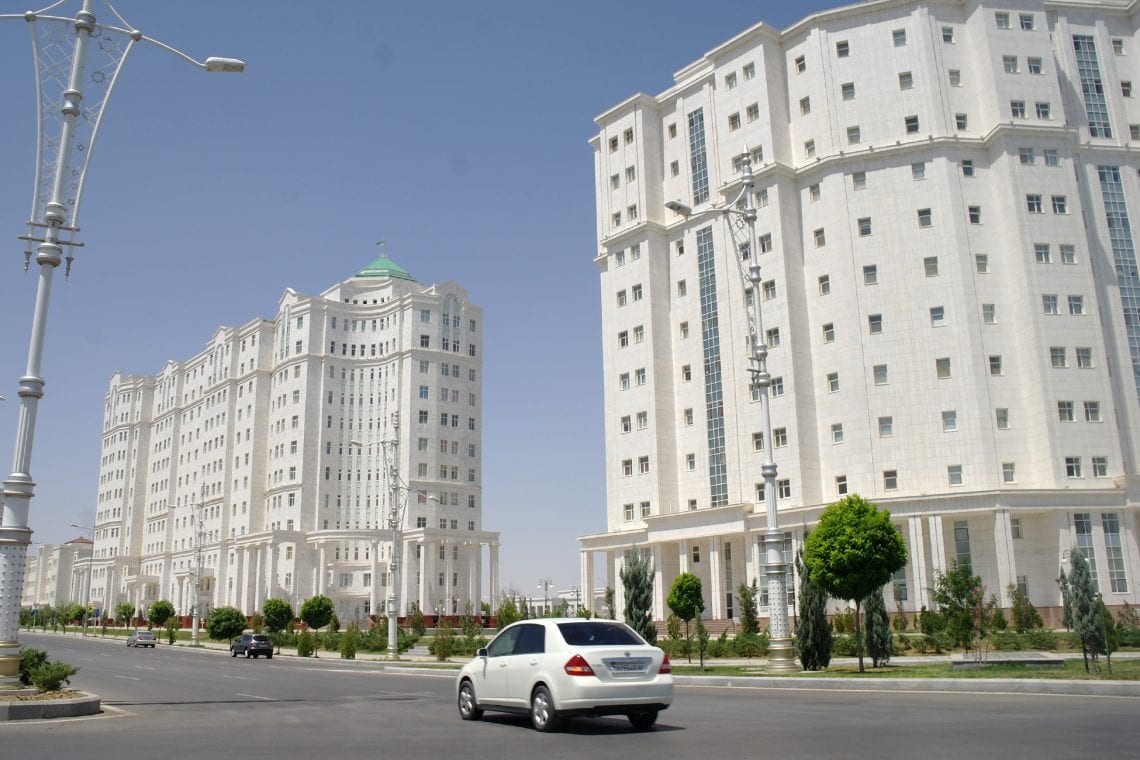
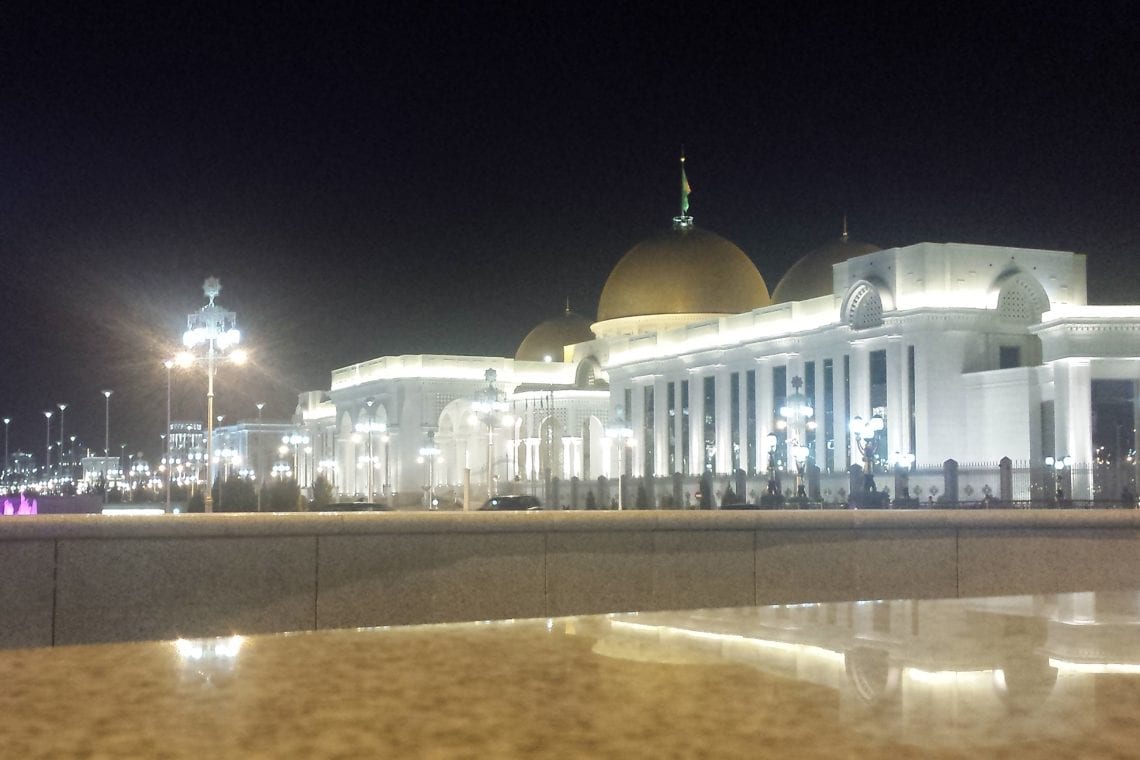
Above: Ashgabat is a surreal place with it’s white marble buildings | The presidential building at night – photography forbiddin
That evening while trying to hail a taxi to take us to town, we learn there is a particular way to signal as we see other people hail cabs but not us. After waving our hands in the air rather cluelessly we succeed. I try to take some pictures out of the taxi window which throws the driver into a panic; it turns out taking pictures in this city is illegal. Ashgabat is really a surreal place, the city is pristine, the buildings dominating,designed to show off and intimidate. The late president was rather self-obsessed. Building monuments and re-naming towns after himself. While North Korea’s leaders make headlines, the reality is that this guy’s just as delusional and just as ruthless. We wander around and soak up the bizarre atmosphere of this place, before we call it a day and return to our rat infested hotel room.
The next day we have time in the morning to visit Ashgabat’s cable car. This cable is 2.5 miles long and starts south of the city and takes visitors up to the Turkmen-Khorasan Mountain Range on the frontier with Iran. The 20 minute trip results in an amazingly great views of the city and its surrounding deserts. The altitude also provides a respite from the relentless heat of below.
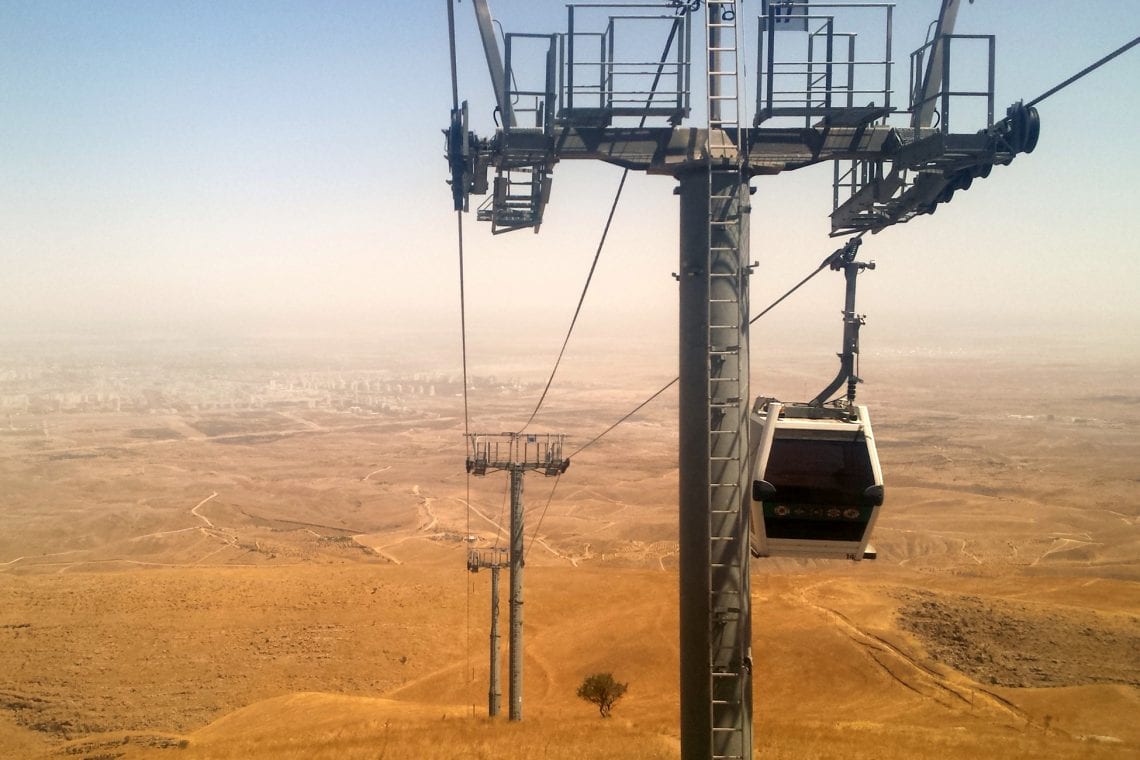
Above: Taking the cable car high above Ashgabat
Come noon, we’re back in our cars heading north through the deserts of Turkmenistan. Our goal for today is Dwervaza, a small outpost in the desert, where close by is a spectacular phenomenon called the ‘Doors to Hell’. The story goes that some 30 years ago, the soviets were mining for oil and struck gas. At the time it was an inconvenience. Their solution was to burn it off. They thought it would burn for a few days, it’s still burning now.
Access to the crater is about five miles off the main road said to be only accessible by 4×4, or at least that’s what the locals say. Of course they are more than happy to provide a lift for 10usd per person. We give it a good go, but after pushing other teams out of deep sand only to gain a few hundred metres, we accept defeat and pay the locals to drop us off at the crater just as night falls.Standing in awe of this burning crater, it’s hard to explain to explain to anyone how incredible it is. The heat the crater kicks out is intense. The fiery orange glow is bright and it takes my eyes some effort to adjust. No one really says much as silhouettes of rallies line the circumference of the crater. Most impressed, it’s time we grab our lift back to where we’ve abandoned our cars. That night we pitch our tents and sleep wild in the desert, with thousands of starts dotted above us in the clear sky.
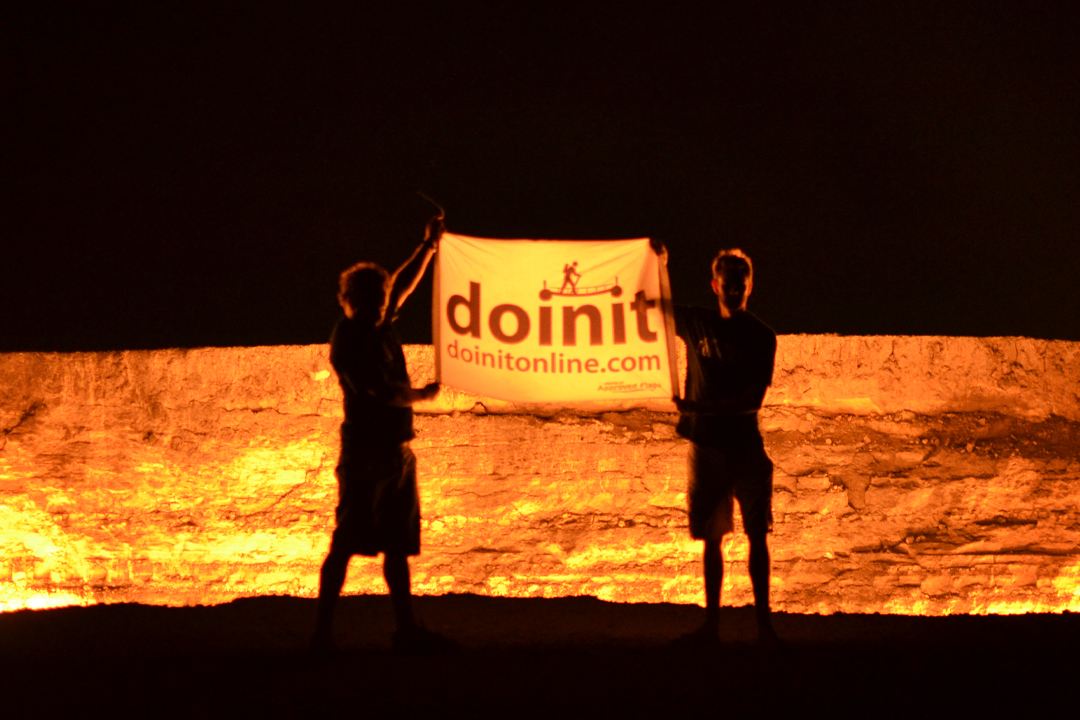

Above: Visiting the doors of hell in Dwervaza and camping in the dessert
Today is the last day our visa allows us to remain in Turkmenistan, this means one thing: we have to leave the country or we’re in big trouble. Looking on a map it doesn’t seem to be too far to the border with Uzbekistan, but what a map won’t tell us is what condition the road is in. We have about 300 km to cover before 6pm as that’s when we’ve heard the border closes, normally not a problem but the road north is in terrible condition. It’s pointless trying to avoid pot holes as there are too many. We average a speed of about 30 miles per hour. Very frustrating but any faster we risk causing some serious damage. Our exhaust is just about hanging on with one screw as the rough road has basically shaken the exhaust loose and it’s about to come off. We‘re signalled by the Danish boys behind us so we stop and get the cable ties out for a quick repair.
It’s been a hard day’s drive, only broken up by the occasional stop to check on the exhaust and to have some water melon from a roadside shack. It’s gone five and we’re still not at border, I’m soaked with sweat from a mix of the 45 degree heat, extreme humidity and tension. We’re on the final straight, the road surface has improved and I’ve the put the pedal to the metal as we race the final stretch heading to the gated road ahead. It’s gone six and the gates are closed. A couple of seconds pass as we sit in silence waiting for something to happen. A solider walks up to the gate, talking into a radio, he doesn’t seem happy but he opens up the gate and waves us through to drive to the customs posts. Now getting into Turkmenistan was long, complicated and frustrating so I’m sure this is going to be just as much of a pain.
I couldn’t be more wrong. The border guards are the most helpful we’ve come across yet. They fill out the paper work for us and hurry us through the various checks. They clearly want to go home and the longer they take to process us, the longer they will have to stay at work. We’re in and out within the space of an hour; this is unheard of in this part of the world were bureaucracy rules. The adrenaline of the last few hours subsides; I’m 500 metres into Uzbek territory and it’s time for a break and a celebration that we’ve got out before our visa expired.
Better roads mean it’s not too long before we reach the northern town of Nukus for a night in a 3 star hotel, complete with decent shower, bar and air con, the exact three things that I require the most right now.
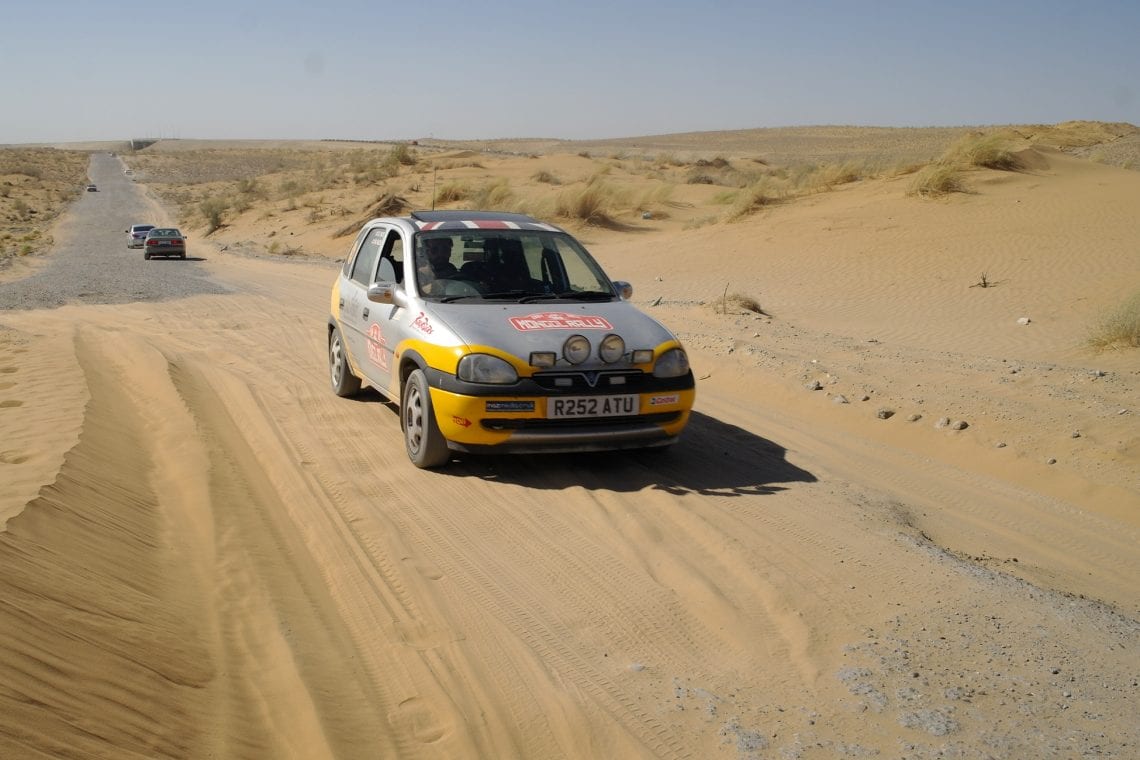
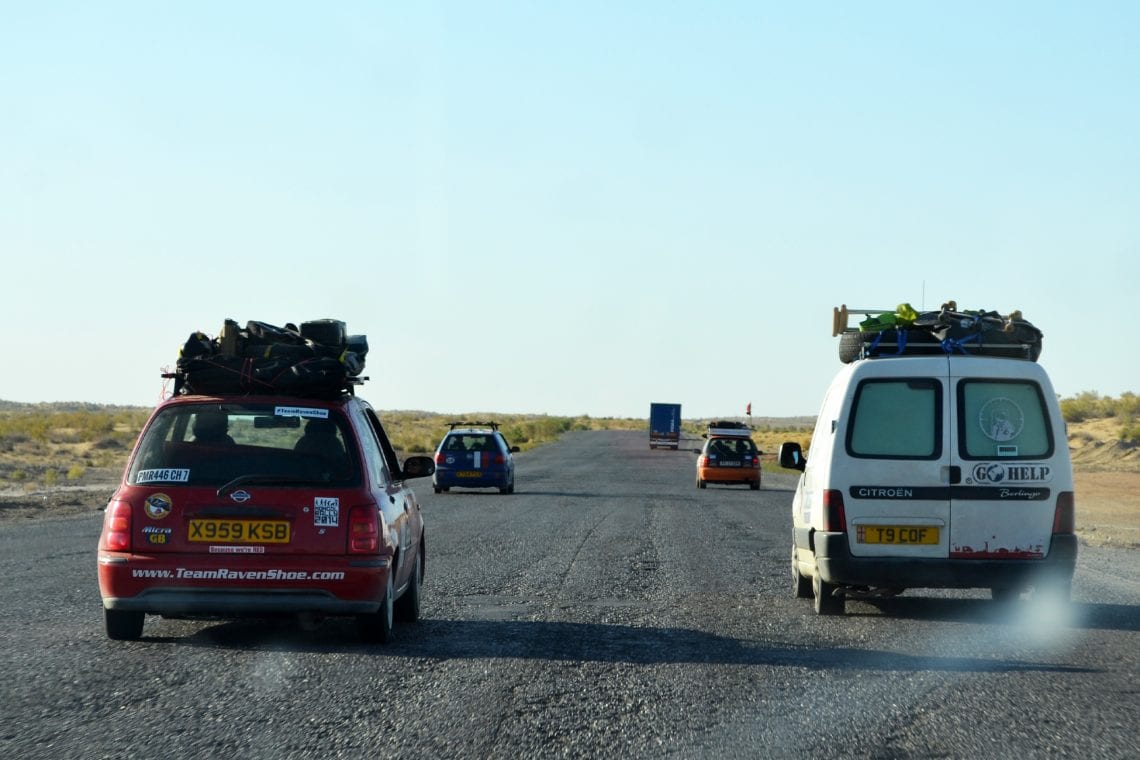
Above: Fixing our exhaust in the heat | Driving thought Turkmenistan
Uzbekistan – the land of no petrol
Day 18 & 19
Over breakfast we’re informed that petrol is not available in Uzbekistan. ”What?!” is pretty much our reaction. A little more probing reveals that petrol stations in Uzbekistan generally don’t sell petrol. All petrol is sold on the black market. Where is this black market? Well turns out it’s everywhere. The plan is to simply ask enough people if they have any petrol they can sell us and hope that someone does. We have just under half a tank so we’re definitely going to need some petrol, Uzbekistan is quite a large country. It’s a problem we’ll have to deal with in about half a tanks worth of travel. To my surprise the roads are in pretty good nick so we can rack up speeds of over 70 miles per hour as we travel through more deserts. We pass a number of petrol stations, all closed, as we head deeper into the country. We hit our reserves when fortunately there’s a collection of houses by the road, time to find out if it is really as easy as just asking people.
We pull in to the central point and see a child playing close by. We ask for petrol, in Russian. The child points to the largest house in the settlement. As we walk towards it a large rugged man meets us. Again we asks for “Benzine.” He shouts backwards and presumably his children run past with plastic bottles filled with petrol ready to fill up our car.

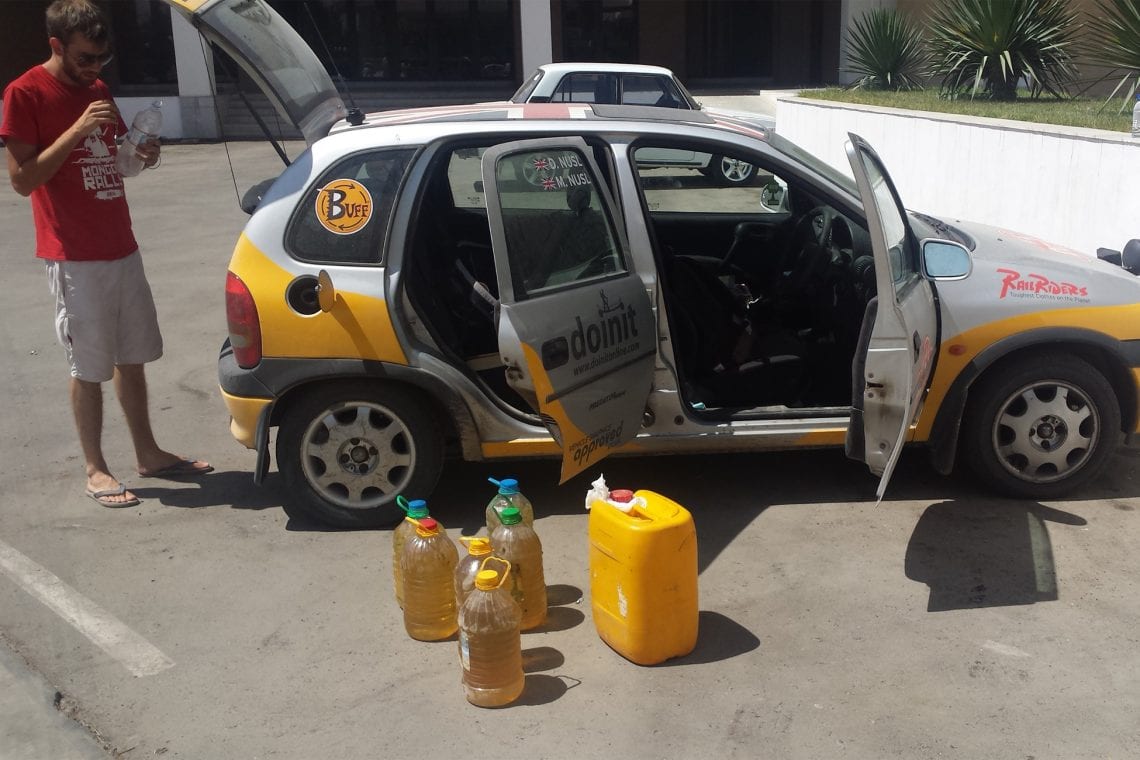
Above: With no petrol in Uzbekistan we are forced to buy this at inflated prices from the black market
It’s a whole day’s drive from Nukus to Samarkand, but it is pretty much the length of the country. It’s dark by the time we arrive in Samarkand and we treat ourselves to what we think will be a nice stay in a hotel, with a pool and some kind of party life. To our surprise we’re the only guests in this massive complex, it’s deserted, rather spooky, but it’s a comfy bed for the night.
Samarkand is home to the wonderful Registan. The morning will gives us a few hours to explore this 15th century old public square. Now a UNESCO World Heritage Site it really deserves a traveller’s attention. The turquoise mosaic tiling is masterful and the huge Islamic influenced structures, formally schools with wide courtyards, make you feel quite small.
We spend an hour wandering the grounds, before we grab some grilled meat and rice on the opposite side of the street and exchange some money for the local Sum. The exchange rate is a bit of a mystery to me as I am handed 100,000’s in massive wads of cash.
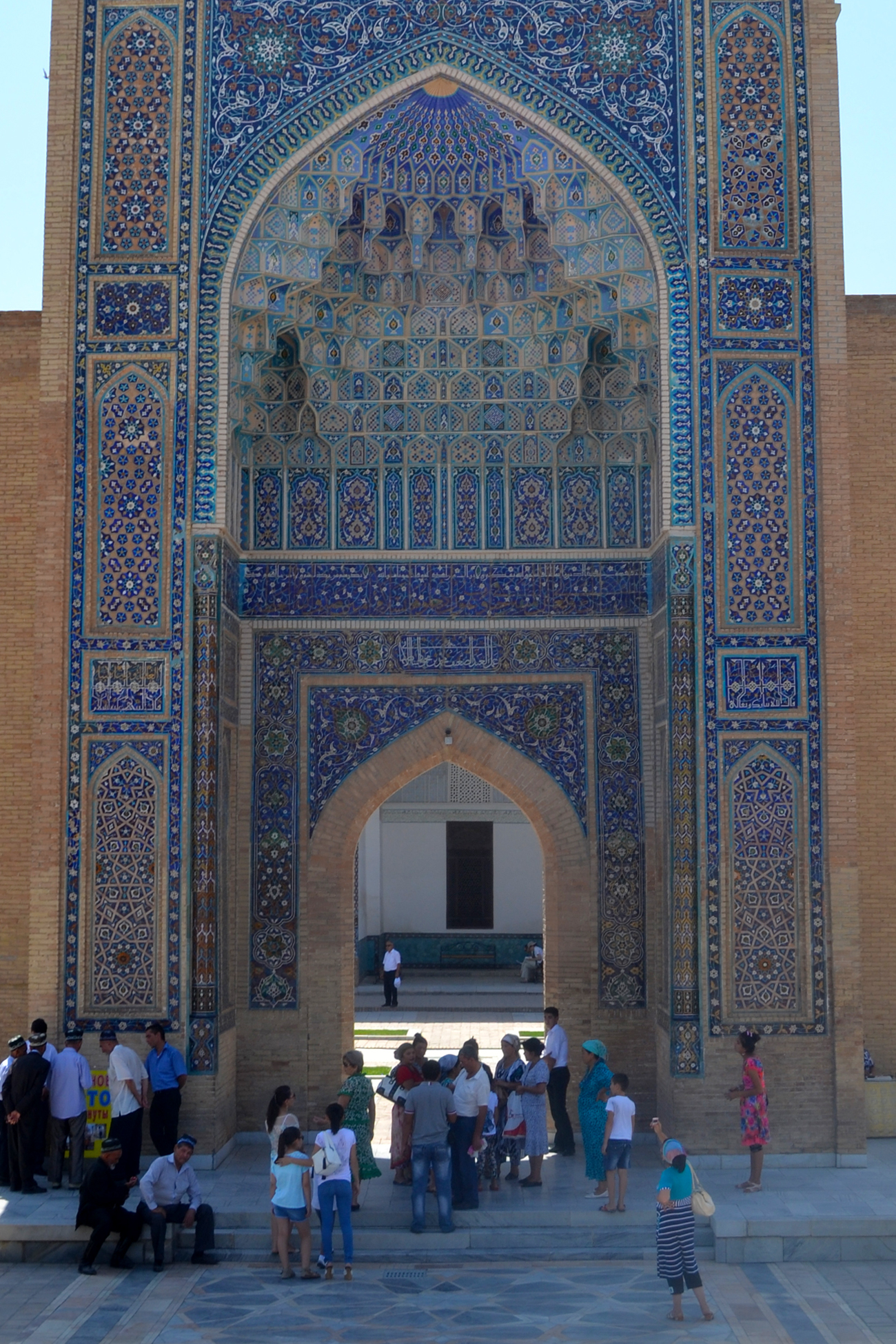
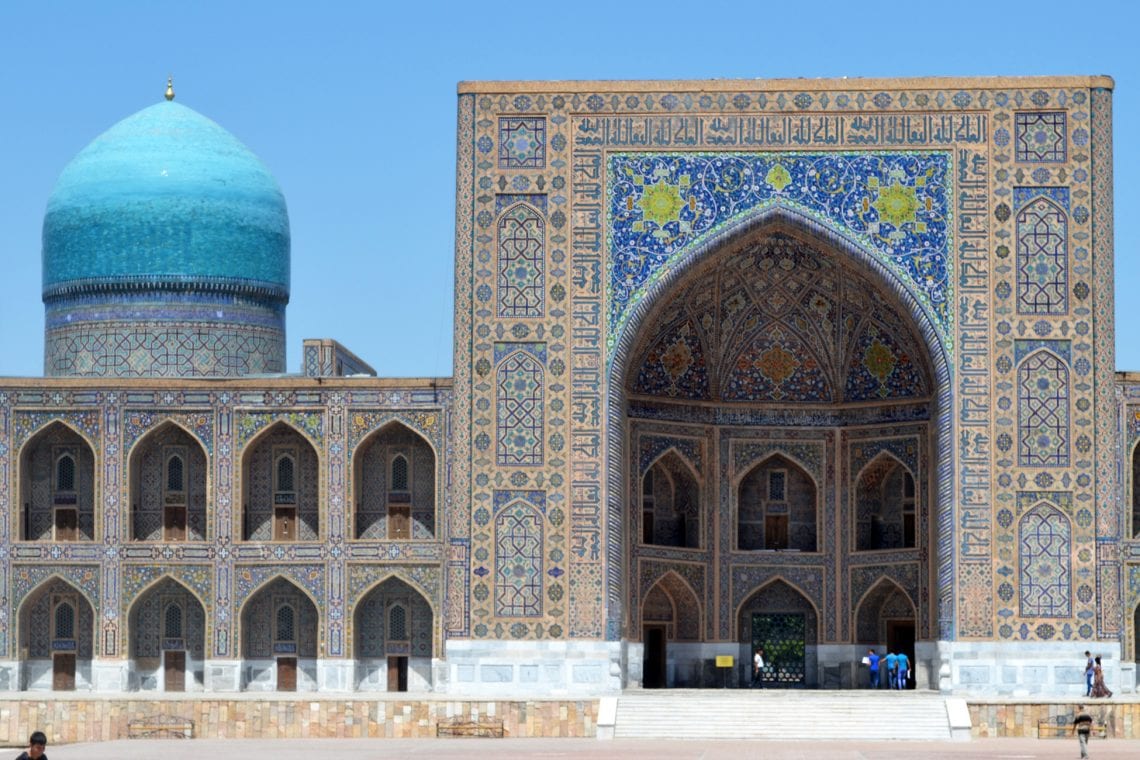

Above: A visit to the Rajasthan is a real highlight of our trip | Counting our wads of money
Today we hope to leave Uzbekistan for Tajikistan. However we’re not sure how, as we’ve heard only a limited number of border crossings are open to foreigners. It’s really going to be down to luck as we head towards the frontier, a frontier we would strudel for a few hours until we find a suitable crossing. It’s a bit hit and miss and it’s not until our third attempt that we win ‘Border Bingo.’ The Uzbek border customs aren’t the nicest of folk, we hear sniggers, and the guards seem somewhat cocky, indicating they’ll find our contraband – we didn’t have any.
We clear the border in due time, now for the Tajik border guards, expectations are low. However, instead of greeting us with suspicion they extend their hands for a handshake. They then pull out a large knife…. and cut up a water melon. They joke, smile and are really a friendly bunch, they couldn’t be more different than the officials only a 100 metres way. They give advice on the driving conditions and allow us to proceed with no hassle at all.
Tajikistan roads are generally good, mostly single lane but well paved as they weave through the spectacular Fan Mountain Range. It’s an amazing sight but as the sun sets it becomes too dark as we drive though the valleys. Once again tiredness takes its toll; we’ve no idea where we are. There aren’t any towns or any signs of civilization around so we decide to spend the night in the car and park up behind a big boulder to shelter us from a potential collision with an out of control truck.
Waking up in the Fan mountains
Day 20
The morning reveals the truly marvellous nature of where we’ve ended up. We spent the night on a precipice overlooking deep V shaped valley. After taking in the view and a cup of coffee we head deeper into the Fan Mountains towards the capital Dushanbe. It’s not a bad trip at all, apart from a 5 km tunnel, a tunnel that takes us nearly 20 minutes to pass through. Why so long? Because it is not quite finished yet.
We slowly drive between trucks that are spewing out black smoke, engines revving as they crawl through the darkness. No ventilation is installed and we do our best to avoid massive potholes filled with water which is seeping through the above rock, making it impossible to truly gauge how deep these holes are. Heavy building machinery is parked along the walls where workmen are drilling. All this with impatient 4×4 drivers honking their horns as they weave in and out of oncoming convoys. It’s genuinely scary and we nickname this ‘the never ending tunnel of death’. Finally we see the light at the end and sigh in relief to be out of this potential tomb.

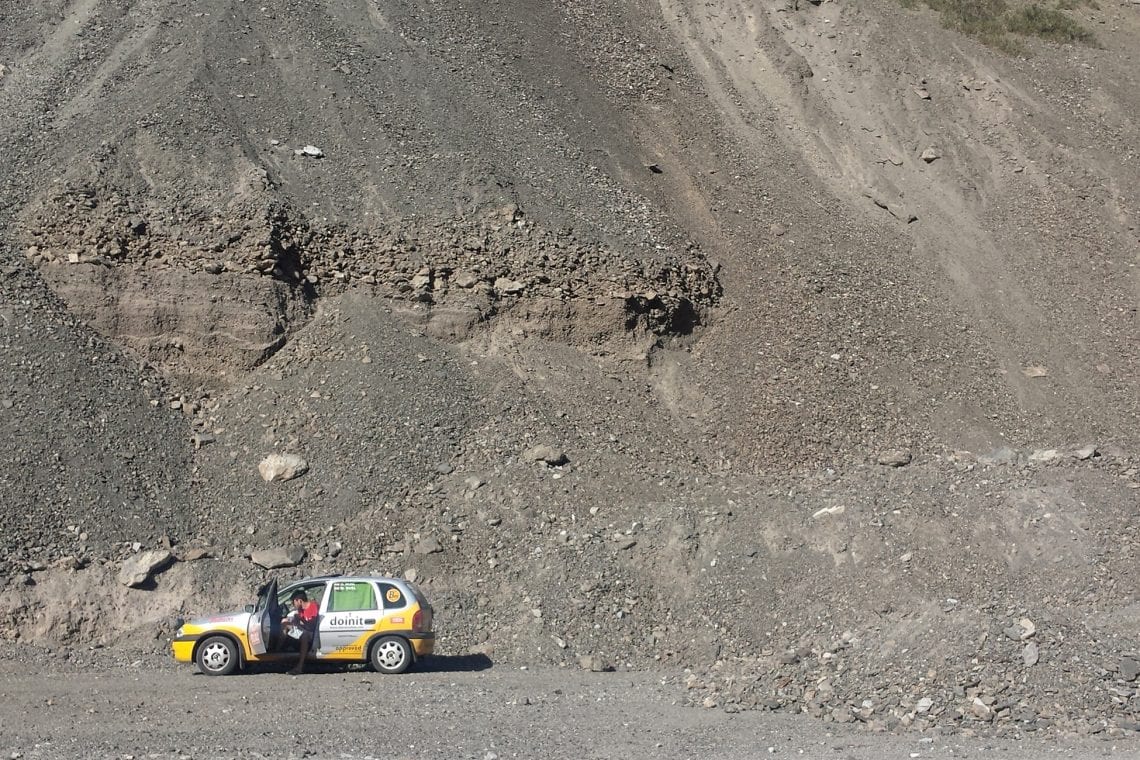

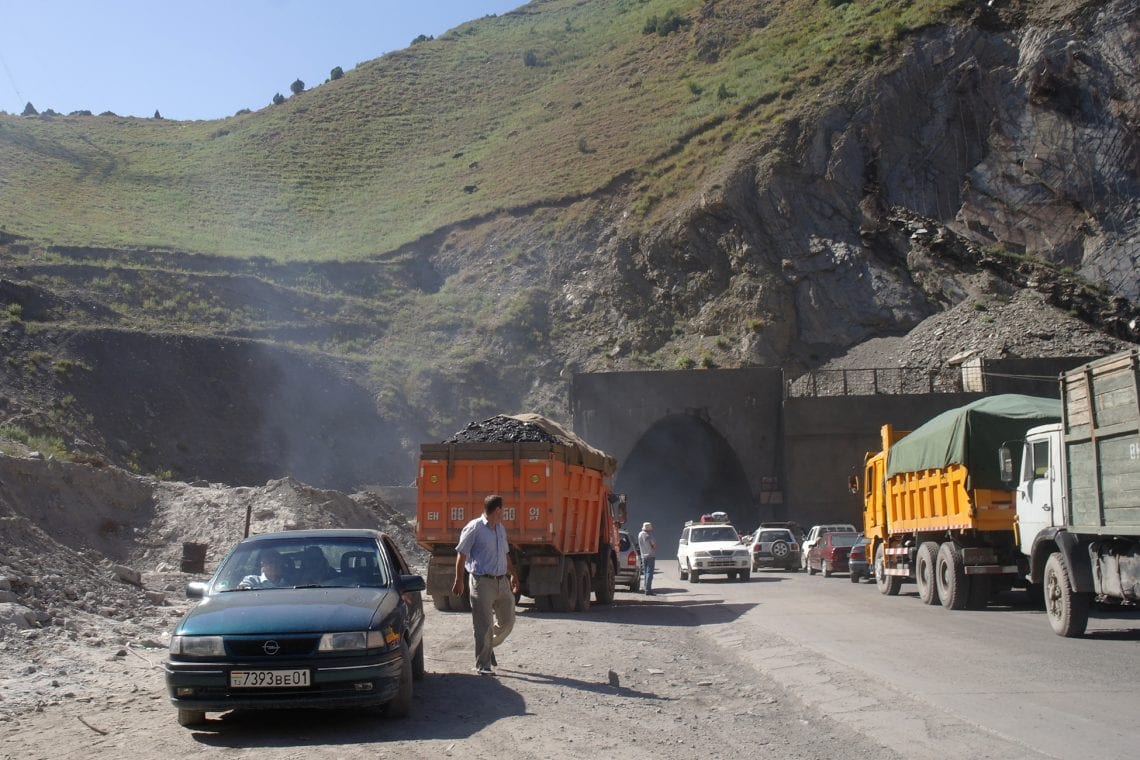
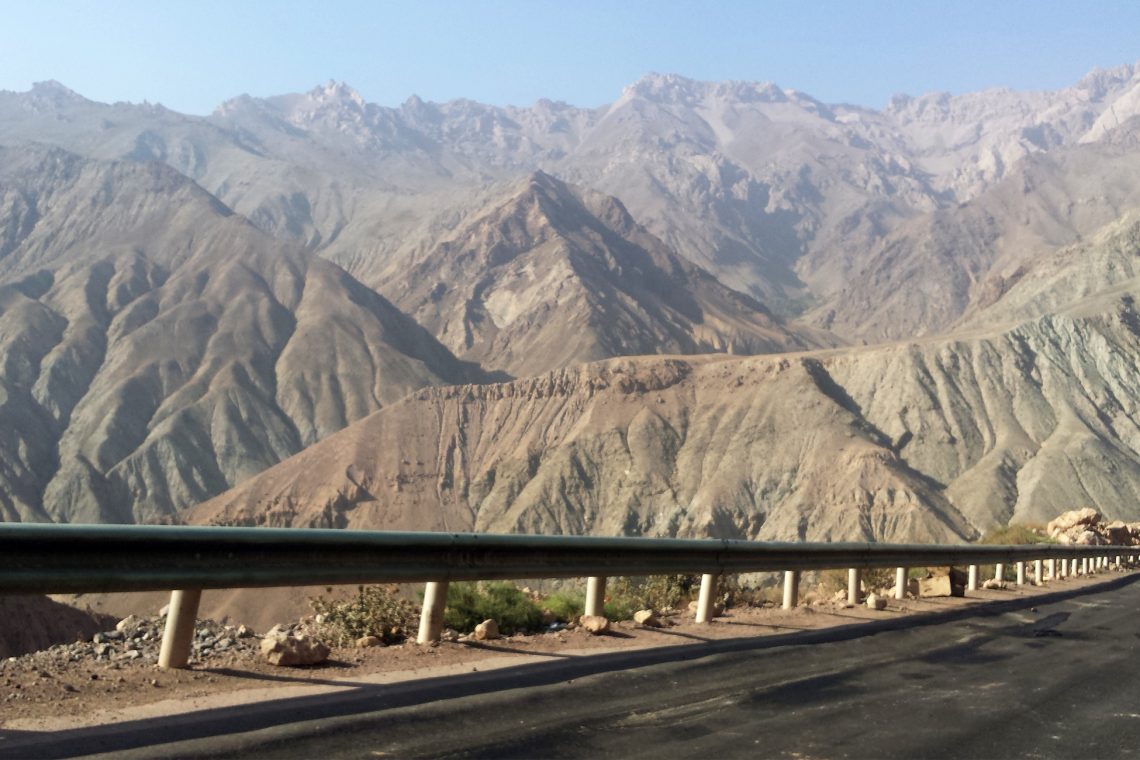
Above: Hanging our with boarder guards | Waking up in the Fan mountains | The ‘tunnel of death’
There’s not much to do in Dushanbe, we stop off at a mall and treat ourselves to a much needed shave and something we’ve both been craving- some familiar food. We discover the rather aptly named “McBurger.” We connect to Wi-Fi to see if any other teams are about and where’s best to go next. Annoyingly, it turns out it’s back the way we came.
One border with Kyrgyzstan is a solid day’s drive and a team reported back they were not allowing anyone to cross. The other option is the Pamir highway, but we’ve not got the permit and we’d have to wait 2 days for the permit office to open. With time against us, we reluctantly decided to double back north, through the tunnel of death, through the Fan Mountains and through the same border post back into Uzbekistan. It’s a two day miscalculation but we’re back on the right track heading eastward now towards Kyrgyzstan. Traffic is busy here and there are many checkpoints. As chance would have it at one of these checkpoints we meet another team – a small van filled with South Africans.
We join forces as we head to the Kyrgyzstan border, this time it’s them that need to be out of the country before midnight. So the pace is fast, until we’re lost and have to rely on locals to help us navigate to the border. We’re late and it’s closed so we’ll have to camp outside and wait for the morning. We share a few stories with our new friends before we slip into our sleeping bags for the night. In the morning we’re the first to pass through the border. Much to the delight of the other team who have out stayed their visa, nothing detrimental really happened and the guards process them as normal.
Cooling of in Kyrgyzstan
Day 22 & 23
Kyrgyzstan is a country of lakes and mountains all combined in a slender of natural beauty and which we have hours to absorb on this awesome drive. We part with our South African friends, as we’ve parted with others in the past few weeks. As the rugged mountains blend into rolling green hills where we see yurts and wild horses, it’s another world here and I start to regret not stopping off. Instead we head towards the traffic of Bishkek. Navigating the town takes some time but our destination isn’t here, it’s a few more hours east from here, along the shores of the world’s 2nd largest saline lake, Lake Issyk Kul.
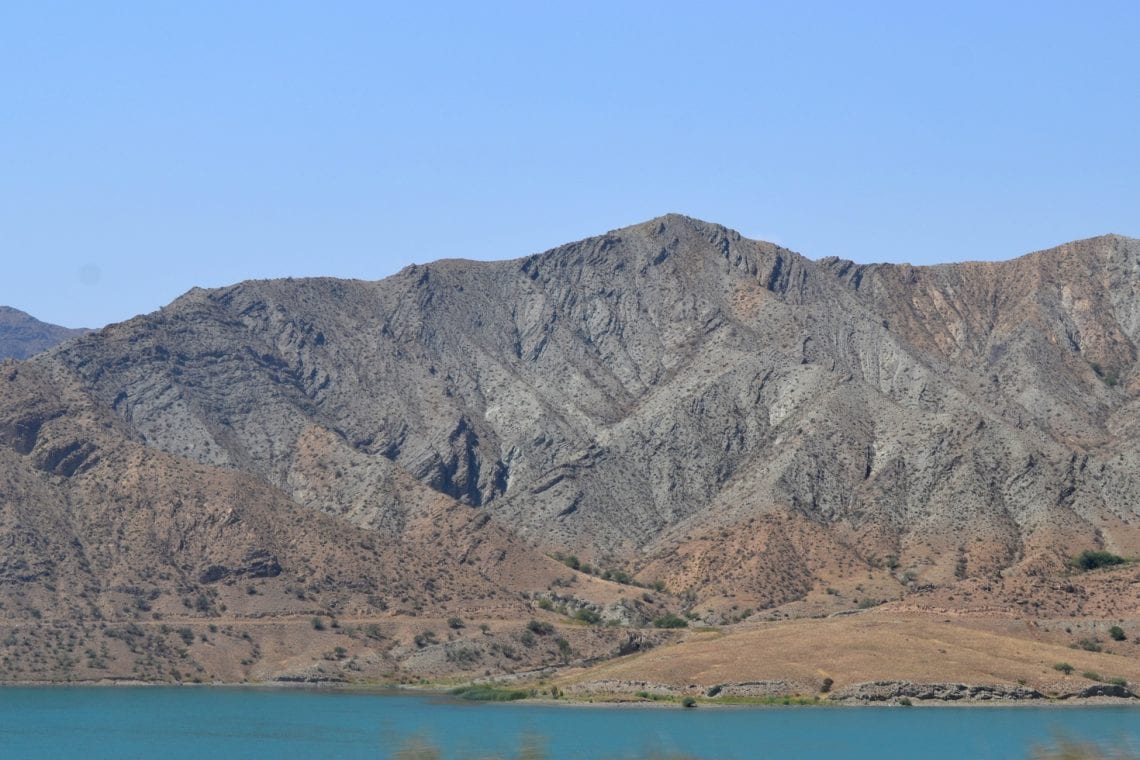
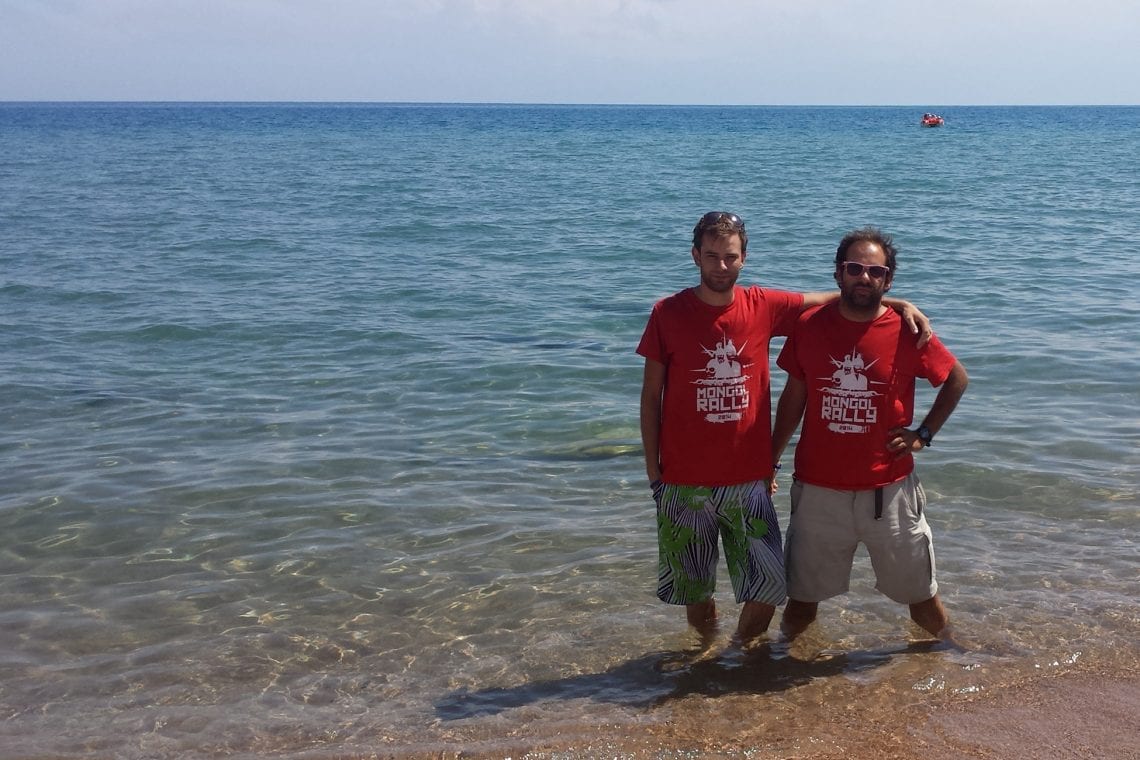
Above: Cooling of in Lake Issyk Kul
Beaches, bars and hotels line the lake; it’s massive and resembles a sea rather than a lake. The heat makes it an appetising thought to take a dip but like all good things it’s time to move on by afternoon. It’s only a short trip out of town when we’re pulled by the police, allegedly for speeding, but a request for an official ticket/receipt proves too much of an imposition and we’re told to leave, and that’s our plan exactly. The plan is to leave Kyrgyzstan and enter Kazakhstan today. The road to the border is deserted, mostly gravel and it seems like it is not used often. Once again the map suggests a short journey but in practice when you are travelling at cautious speeds it may as well be double the distance. We reach the border before it closes; this is starting to become a habit, I think to myself.
Kazakhstan – the land of long roads and motels
Day 24, & 25
Kazakhstan is massive and we soon learn you can drive for hours and not come across a town. It’s 2am when we arrive in Astana, a huge modern city where we drive around aimlessly as we try to find a hotel. Bizarrely we end up pushing a Porsche Cayenne at the silly hour which has run out of fuel. Ten minutes later we’re stopped by a police car and they’re demanding the equivalent of £160 for my driving licence. I protest for about 20 minutes before I threaten to call the embassy – this seems to work and they leave. It’s been an eventful hour and we’ve still not found a place to stay, but more by luck we find a hotel and one that doesn’t charge by the hour!
Over the next few days we drive across the Kazak steppe. Kazakhstan looks big on a map, being there in person it’s almost never ending. We’re travelling solo, heading north along good roads with courteous drivers. The temperatures are not as hot as we’ve experience over the previous days, in fact it’s turning cool as clouds come in. We’ve had good weather up until now. The wind picks up and it seems the heavens open up as the rain begins to pound our car, our wipers can’t keep up so we’re forced to stop and wait for the rain to let up. The thunder rattles our car and the lightning’s so bright it takes a few seconds for our eyes to adjust. The storm lasts for a whole day and the rain seems to follow us north for days. One thing that does play on my mind is the fact that we appear to be the only metal conductor in this otherwise completely flat, open, never ending green plain. Our destinations are only points on a map, over the next two days we just drive and sleep in road side motels meant for truck drivers as we stubbornly head towards Russia.
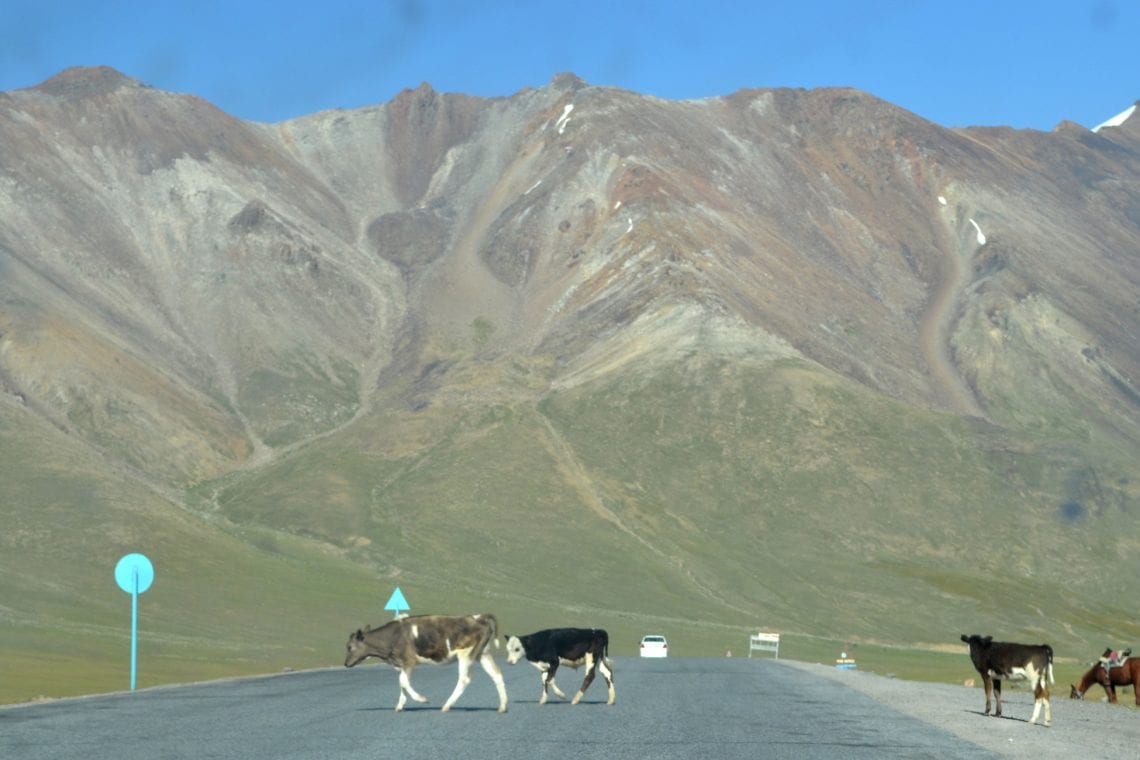
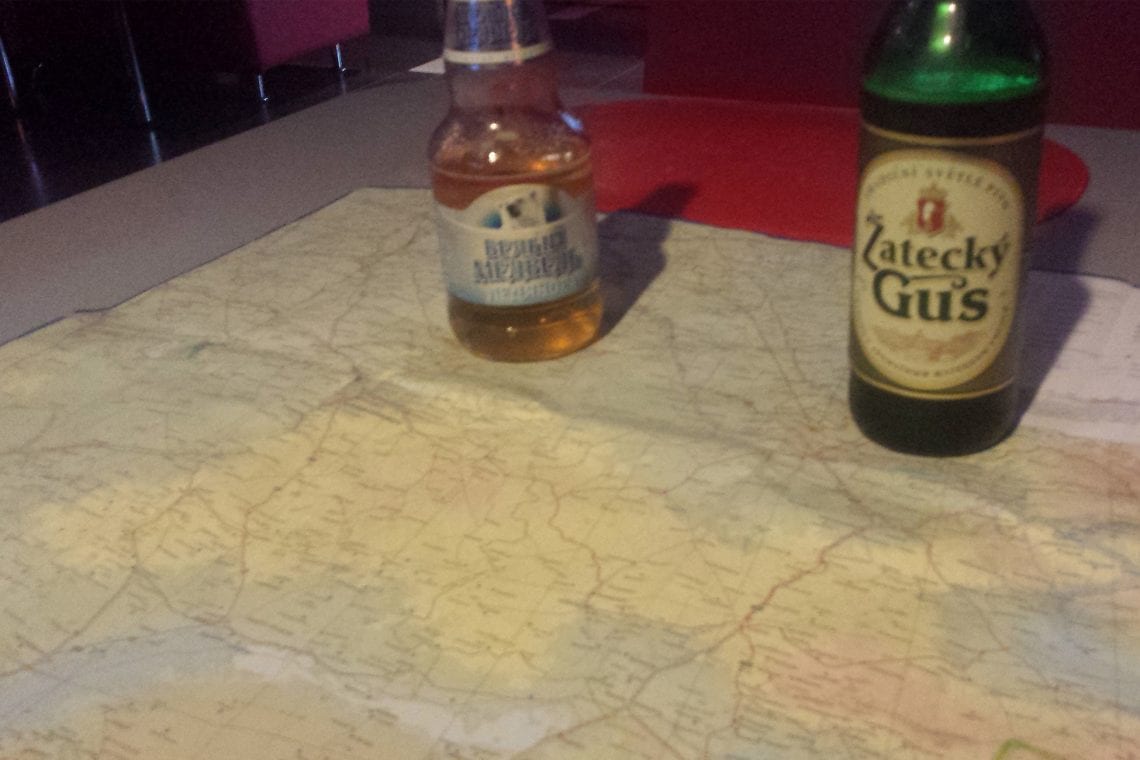
Above: Long days in Kazakhstan with our evenings spent planning our next move
Flat tyers and closed boarders in Russia
Day 26, 27 & 28
Russia’s been in the news quite a bit recently and mostly not for good reasons so I don’t really know what to expect. Of course the paperwork required is renowned. At the Russian border papers are passed around, I don’t even know what they are for but the past weeks of travelling have taught me not to be surprised anymore and just go with the flow.
Russian roads seem to have been newly laid, they’re so smooth and a delight to drive on, but after dark Dan somehow manages to find the only pot hole and clips both wheels resulting in two simultaneous flats, and we’re not carrying a spare. This is pretty bad and we limp a few miles to a village were we stop for the night. By the time we find somewhere to stop the tires are completely shredded. There’s nothing we can really do but park up and sleep in the car. I tell Dan “it will work itself out” as we roll the seats back and try to get some sleep.
We’re awoken in the morning by a knocks on the window. A little bewildered we roll the windows down – it’s the police asking in really broken English if we need assistance? We gesture at our two flat tires and the police officers know what the problem is. They offer to give me a ride to find another pair. Before I know it I’m in the back of a police car being driven around from village to village trying to find some tires. The first few garages don’t prove fruitful but eventually we get our much needed tires and they’re almost the right size. All in all it’s about 90 minutes before I’m back at the car with Dan and with the police officers changing our wheels for us before wishing us good luck on our onward journey.
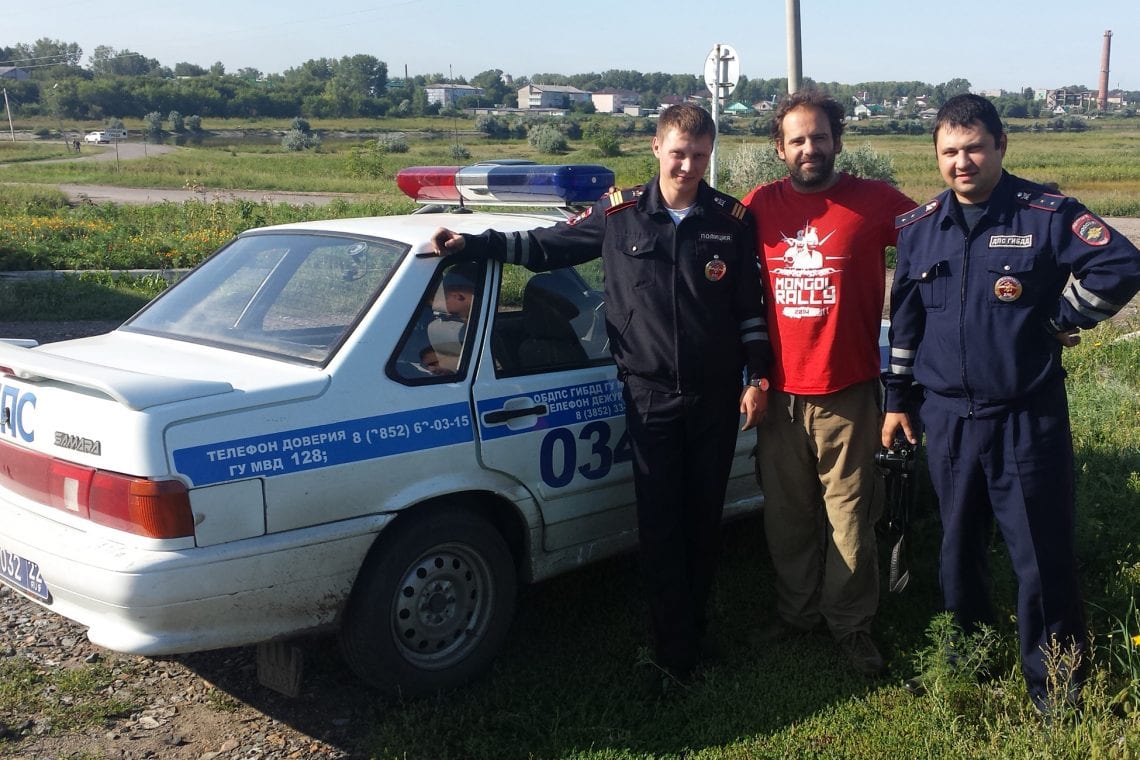
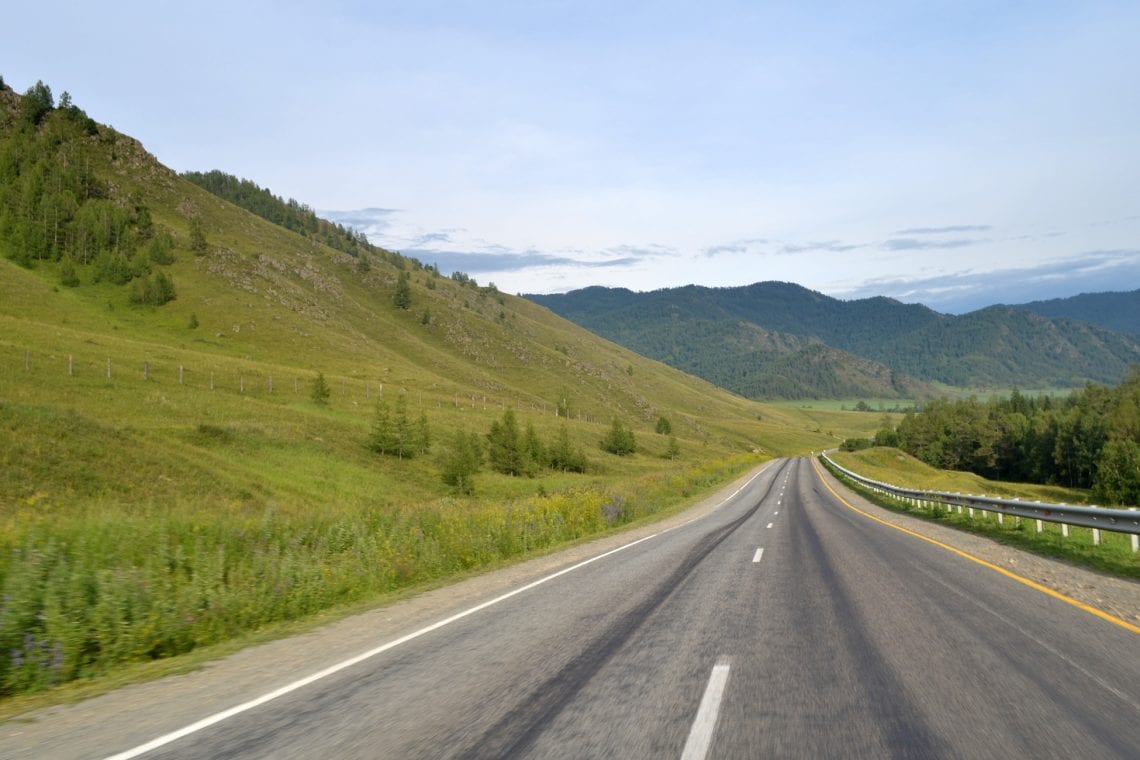
Above: There Russian police officers really helped us out before we hit the road thought the stunning Alti region
With four good tires we’re on our way through Russia and its Siberian region. We’ll stop off at the city of Barnaul for lunch, supplies and to withdraw some cash from the ATMs. The rest of the day is spent driving east through Russia’s Alti Region and what a dive it is. The area seems to be a mecca for outdoor pursuits. There’s camps, lodges, lakes, rivers and many bill boards advertising white water rafting. This is clearly an outdoor play area for Russians, much like Snowdonia is for us Brits. The further we drive along the M52, the road to Mongolia, the less and less civilisation we see. This is it now, the final stretch, albeit a long one. After hours and hours of driving we occasionally pass the odd village. It is remarkable that people live in such isolated remoteness. We feel compelled to stop for any hitchhikers, even managing to fit a family of three in the back of our car.
Again it’s dark by the time we reach our final frontier. The gates before us are closed so again we are forced to spend a night in our car waiting for a border to open. That night I think about how far we’ve come, weeks of uncomfortable travel, amazing sights, and new friends and now I thought our journey is almost at an end. Boy, was I wrong.
The next morning we see a fellow traveller who informs us the border is closed today. This means we’ve a day to kill and another night to endure in the elements. With nothing to do we drive a few miles back where we think there is a shop and a garage where we can pick up some supplies and a spare tire. When we’re back at the border, more and more rallies turn up. By mid-afternoon there’s about 10 cars with us. Pitching up tents and lighting fires. There’s even a game of cricket taking place. Even our friends from South Africa whom we split from a few days ago rock up with a few Russians who know how to liven up any party. The whole day has a festival atmosphere as we all catch up and break out the drinks as we share stories. The off-key singing starts and the laughs are plentiful as we celebrate getting this far into the early hours of the morning.
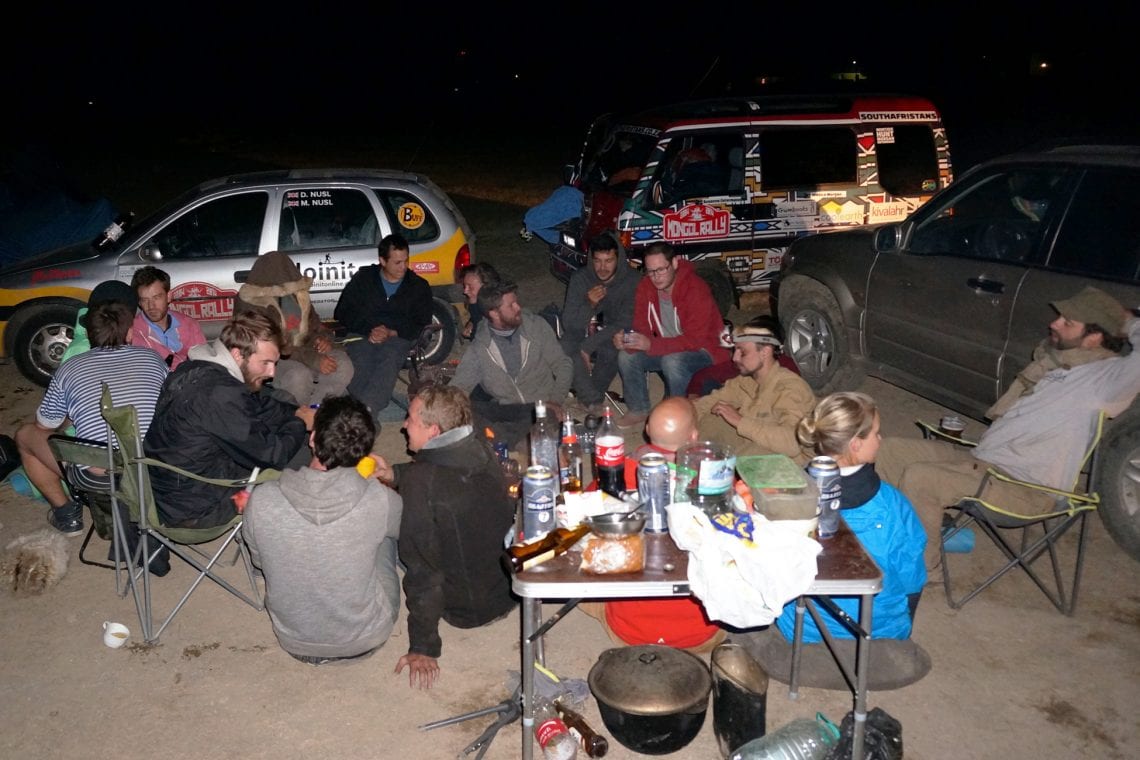

Above: With the boarder closed there is little to do but camp and have a little party | In the morning the que’s across the boarder are pretty long
Final stretch through Mongolia
Day 29, 30, 31 & 32
The morning breaks and despite the remoteness the border outpost is a busy place. Locals seem to have appeared from nowhere. We pack up and make our way to the queues at the border. It’s a slow process. For some reason we have to queue at a hut before we can actually join the queue for the border. It’s a rather confusing and incredibly frustrating wait as locals jump the queues. It takes all morning but we are allowed through just before they close the border for lunch.
During the border crossing we gain an extra passenger. Turns out the South African team were having some issues with the paperwork and with one of their team members, Jess, urgently needed to get to the finish point to fly back to work as she can’t afford any delays. Dan and myself adopt a new teammate for the final leg of the rally.
Finally we are in Mongolia, the land of Genghis Khan. Emotions are high; we’ve made Mongolia in cheap little cars, now only to see if we can reach the finish line in Ulaan Baatar. Mongolia is huge and very sparsely populated. There are essentially no roads in most of the country. The cities are connected loosely by a system of tracks, no road signs and I think it will mostly be luck which ensures we actually get to our destination. No roads also mean no bridges. There’s been a lot of rain and streams have swelled into rivers, thick mud covers the ground as we’re forced to navigate these routes, often reluctantly revving our car to the max. This is the last place you want to stall.
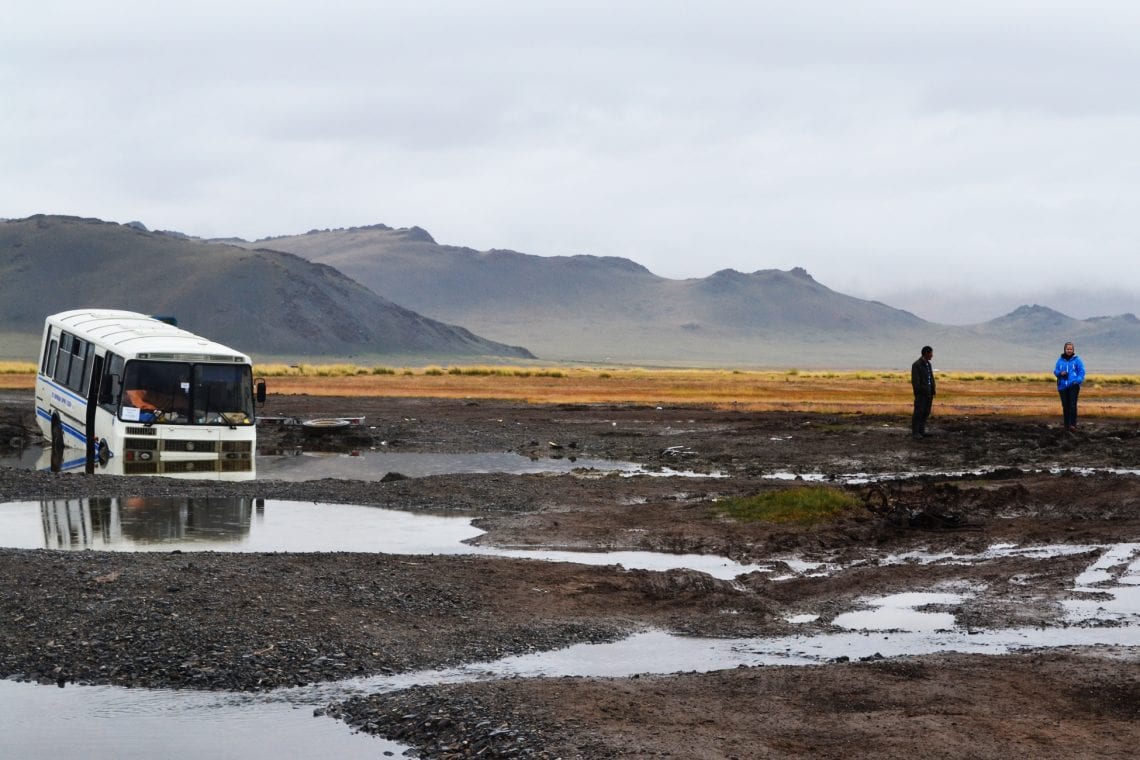
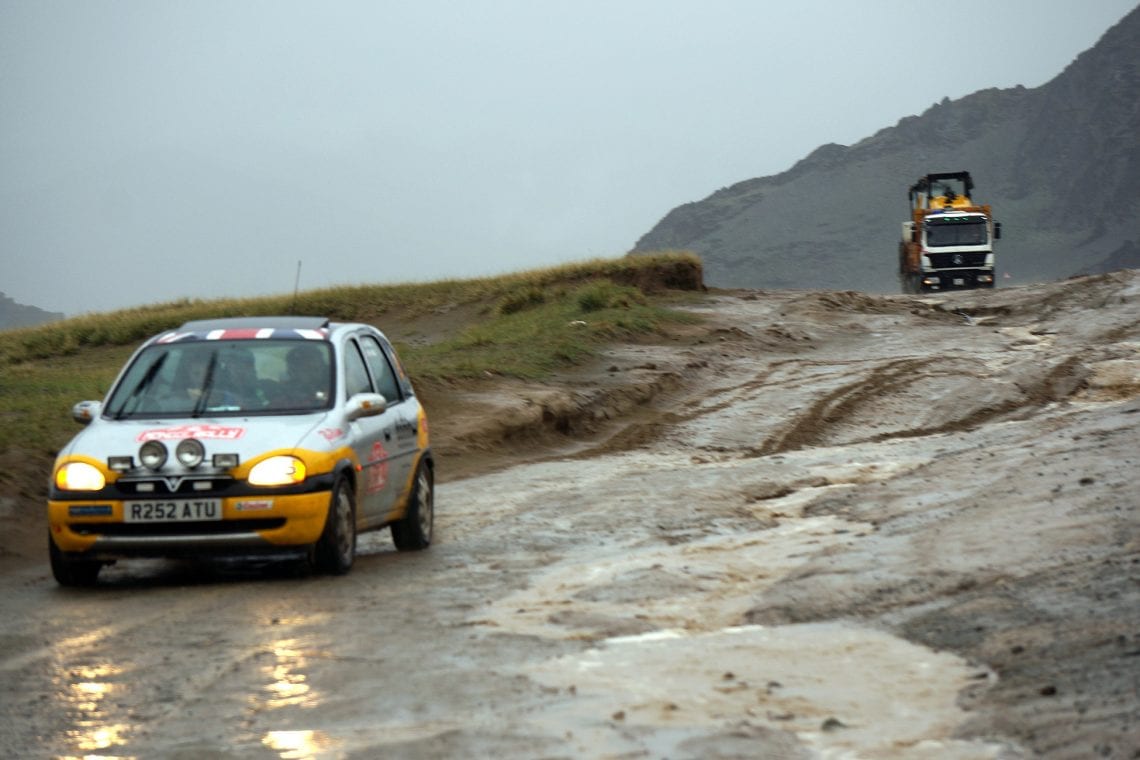
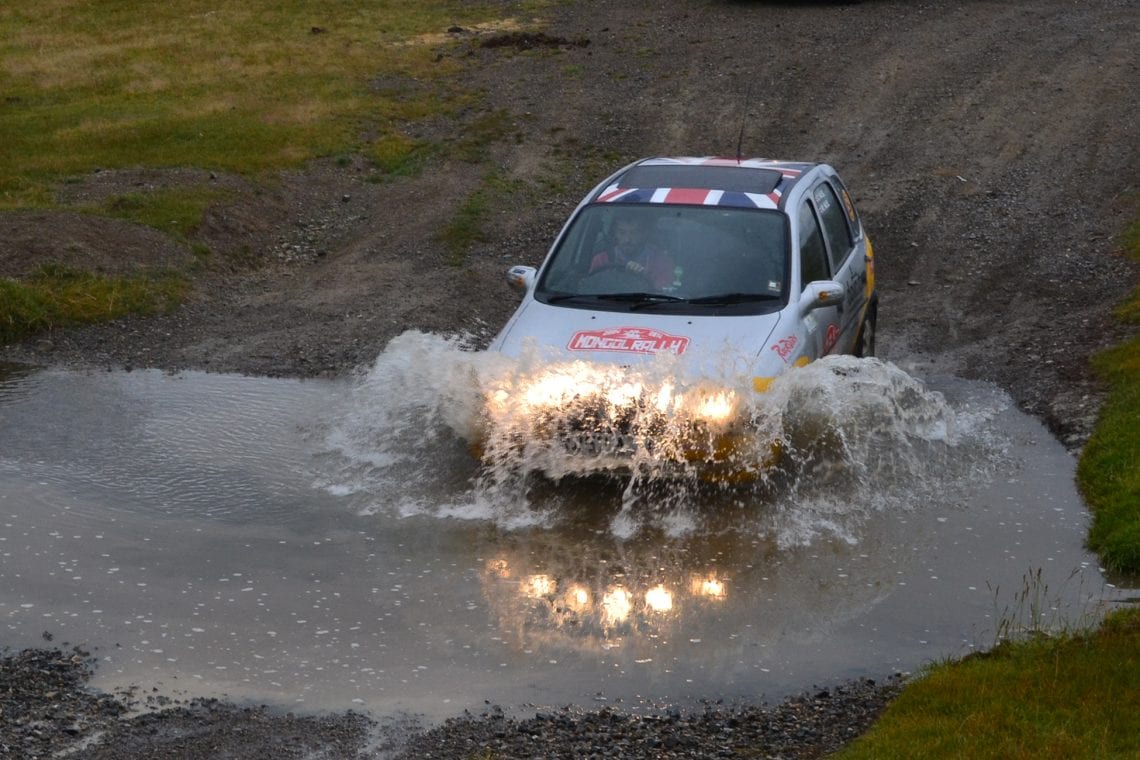

Above: It’s not long in to Mongolia when we start coming up against obstacle
We’ve formed a convoy of two other teams, a group of Aussie’s in a Nissan Micra and a team from London in a Toyota Yaris. We’re also joined by an independent traveller in his 1970’s Skoda. We blaze our trail through the vast openness of the Mongolia steppe. As it rains the ground become waterlogged. We spend three days racing each other, skidding in the grounds and admittedly being rather irresponsible. Nights are spent in tents in the wild, there are no trees or shelter from the wind. I don’t think I’ve ever been anywhere so exposed and open. It also provides for a unique problem. There are no woods so where does one evacuate ones bowels without being in plain sight of your fellow rallies?
Driving in Mongolia certainly takes its toll on a car especially as we begin to throw caution to the wind. In this wilderness, despite the flatness, it’s easy to lose your convoy as one night we find out and we find ourselves driving though a dry river bed, not the best place to be while it’s raining. It is some hours later when, with some blind luck, we actually re-join the convoy. The general rule seems to be to drive in the path of least resistance and you’ll get to where you should be going.
Towns in Mongolia do have tarmac, but with tarmac comes traffic. It’s a strange sight to see these towns built up in the middle of nowhere. It’s as if they’ve just been planted with no thought given to connecting them to… well, anything. Tarmac will usually run a short distance out of the town when without any notice, and usually at a blind summit, the tarmac suddenly ends and we’re back on rough ground – with one heck of a bump.
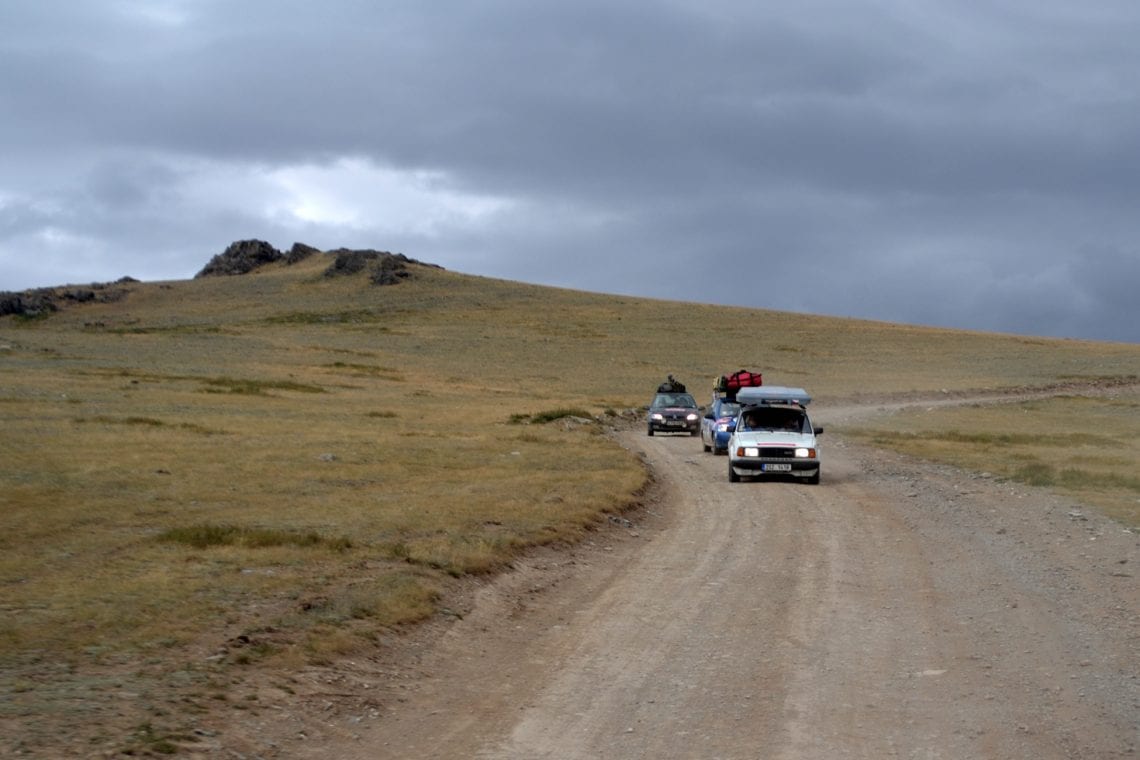
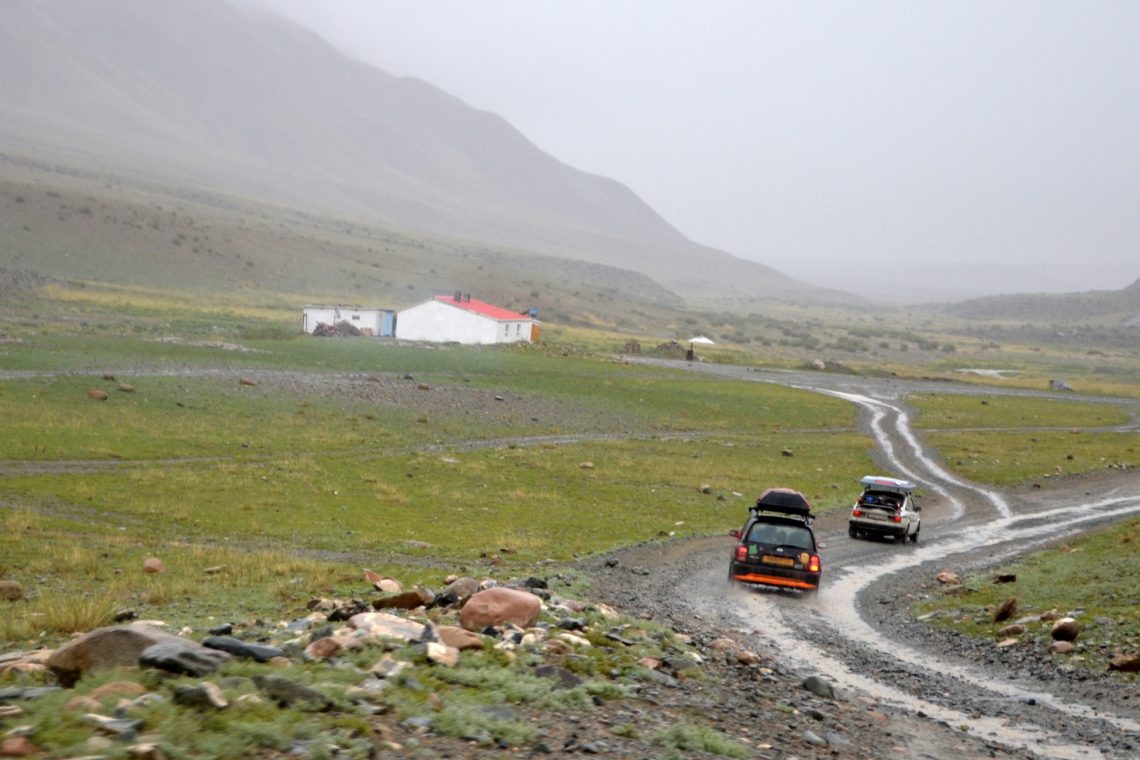
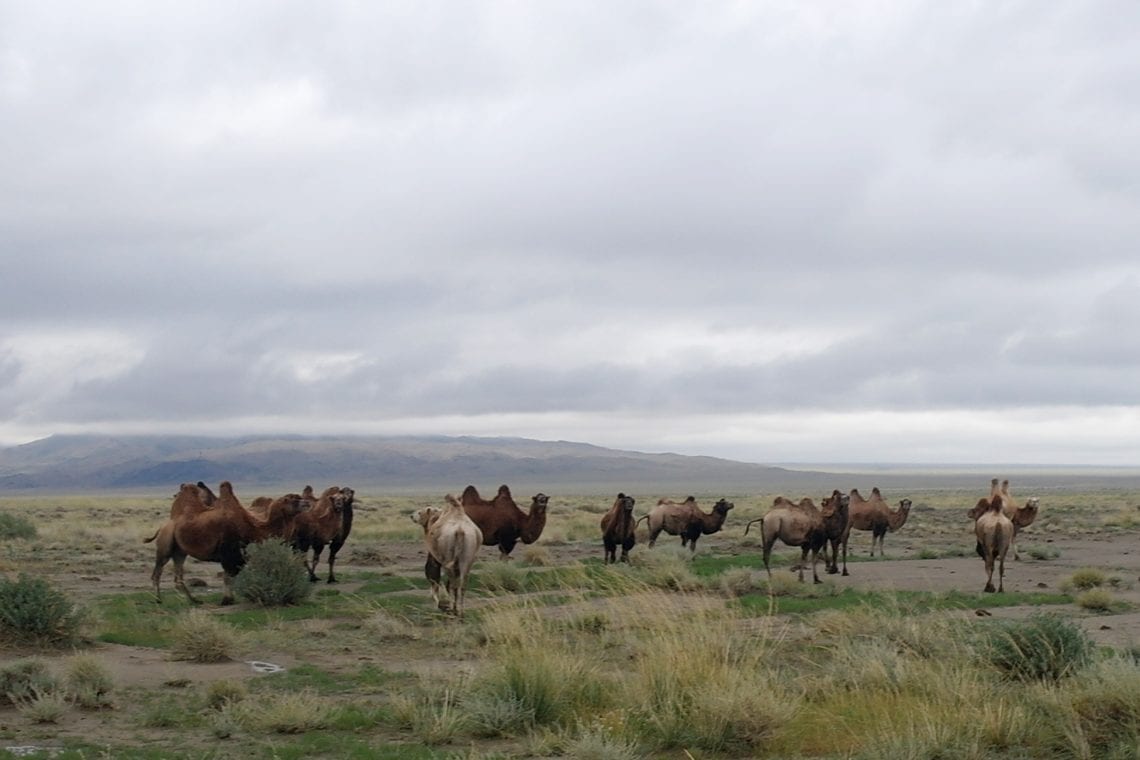
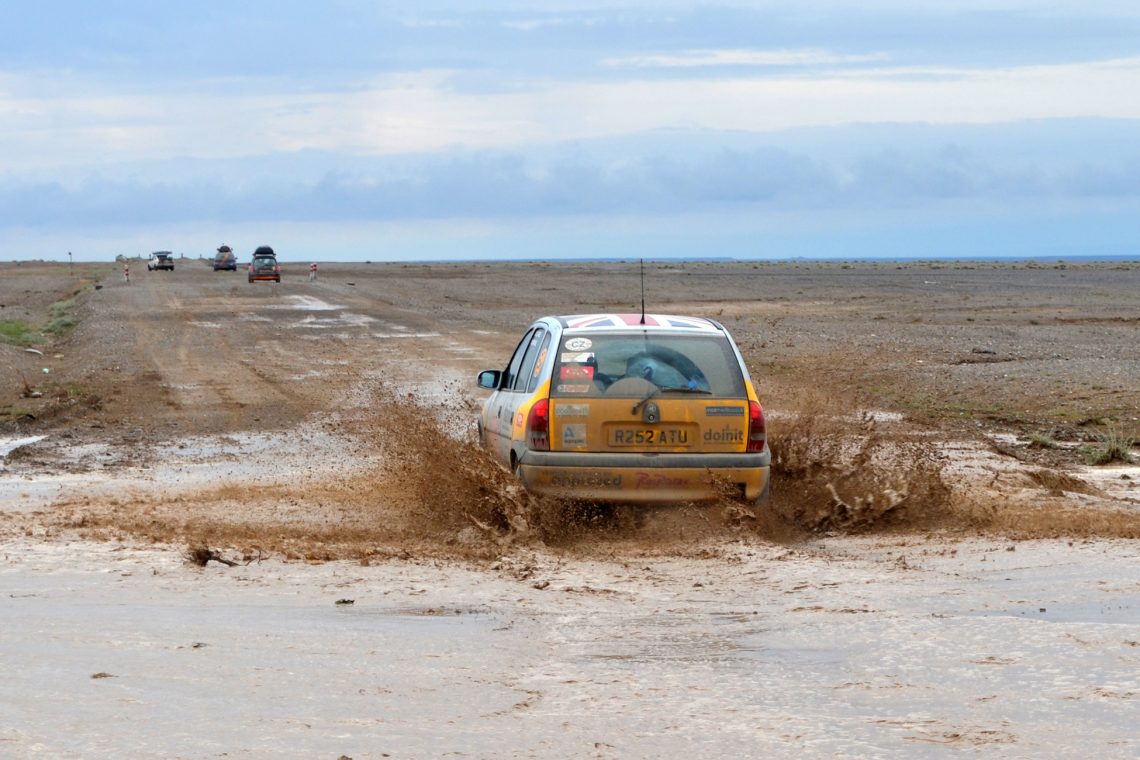
Above: The weather deteriorates as we spend days wild camping on the Mongolian steppe
During our final days of the Mongol Rally we’ve punctured tires on what appears to be a purposeful line of shards of broken bottles on the track, we called these ‘Mongolia Speed Humps’. We’ve lost our exhaust, blown our speakers, cracked our windscreen and lights, and due to an unavoidable pothole, damaged our rear wheel bearings which means for the final day we have to endure the most annoying of squeaking noise which even the other teams can hear from their cars. But these last few days are really what the Mongol Rally is all about, going on that epic adventure with no safeguards. It’s scary and totally outside ones comfort zone, but it’s also incredibly exhilarating as you don’t know what’s around the next turn.
After three days of traversing the Mongol plateaus we reach tarmac, but it would have been better if it was just drift. The final stretch into Ulaan Bataar is a car killer. We can’t risk speeds of over 30 mph in case we lose a wheel in one of these huge pot holes. The darkness doesn’t help matters and seeing Mongolian SUV’s parked along the side of this road changing their wheels makes for an uneasy feeling. The caution creeps back into my gut as I concentrate for the final hours as we make it to UB. It’s a little before midnight when we finally make it into the capital.
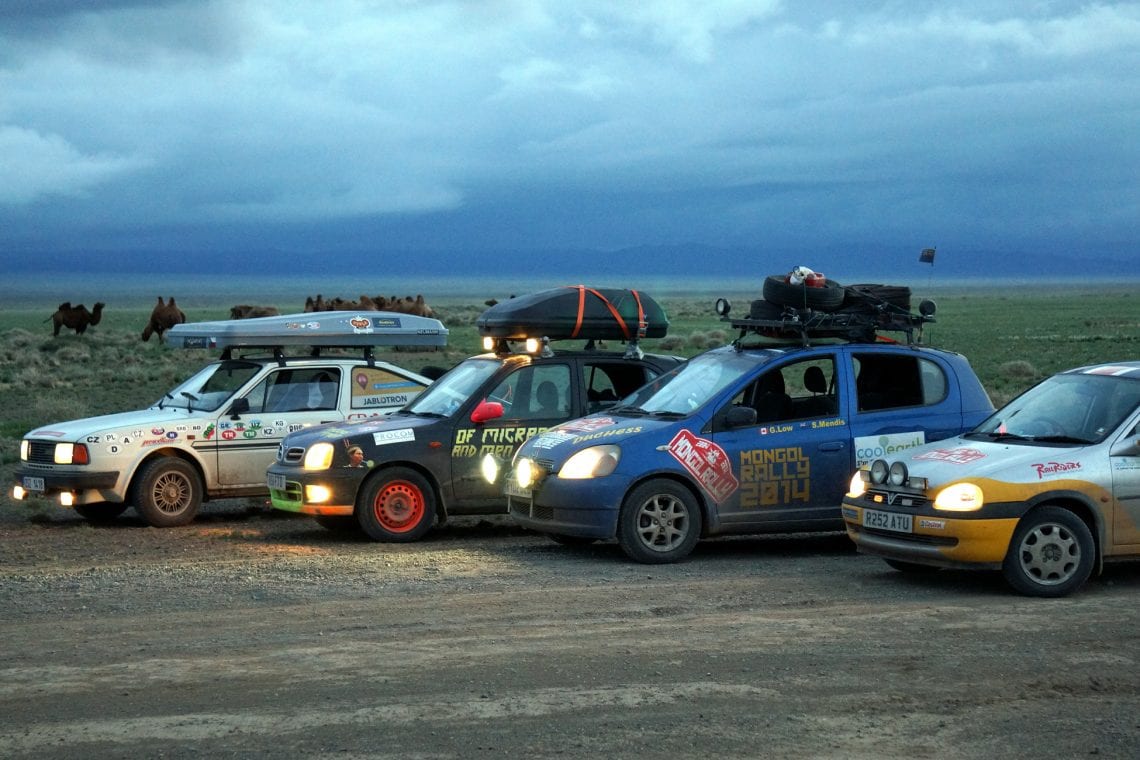
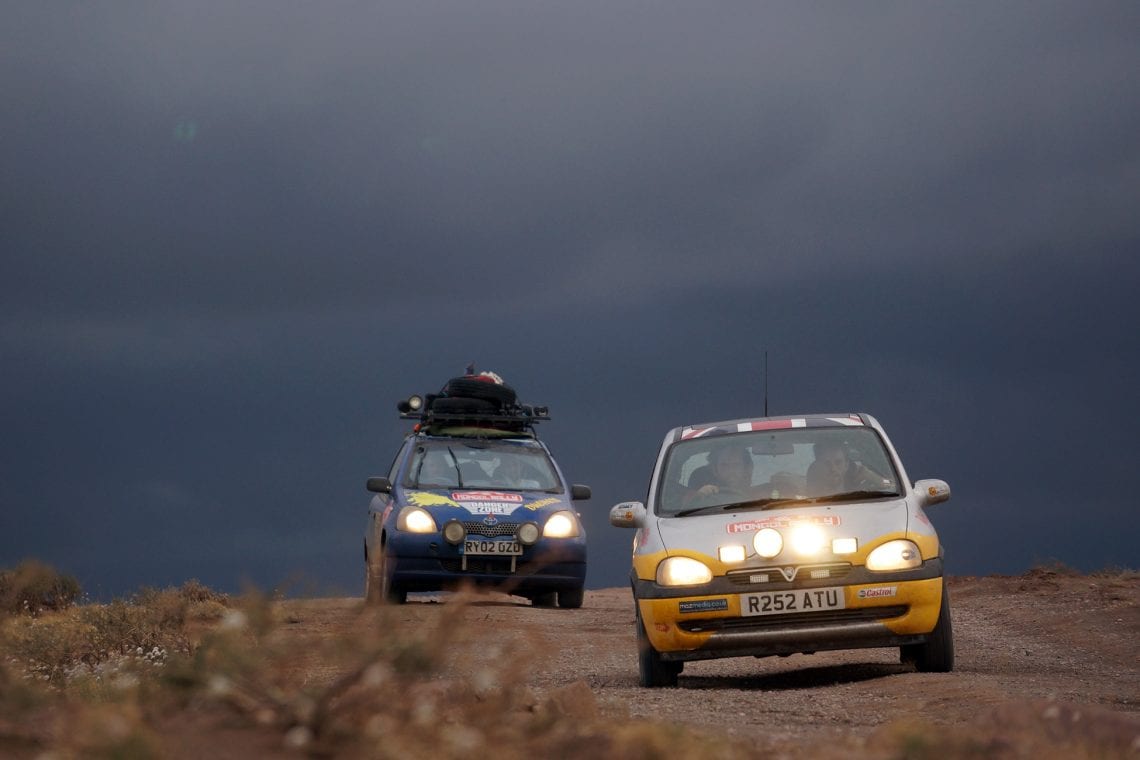
Above: As we get closer to the finish line to we start drag racing to see who has the fastest car | Replacing another punctured tyre
The scale of what we’ve accomplished is only kept at bay by the tiredness but the excitement of what awaits keeps us awake. After 7 days of sleeping in tents and cars tonight we shower, eat well and sleep on an actual bed. The bright neon lights of UB advertising countless karaoke bars are stimulating. Though rough around the edges, UB feels safe. There is an official finish line, but at 1am what’s an extra night? We pull into one of the many hotel for a long await wash, hot pizza and beers in the reception as we celebrate reaching Ulaan Bataar from London.
The next day we find the official finish line only a few miles away where we deposit our vehicle to be shipped out of Mongolia, as legally it cannot stay there, so there’s a bit more paperwork but compared to what we’ve experienced so far it’s a breeze. Dan and I relocate ourselves to the official Mongol Rally hotel where we stay for a few days and we see other teams come and go.
We have a few days to rest up and compose ourselves, take on much needed calories, shave and generally reflect on the last month. It may be a cliché to say it’s been tough but totally worth it but it has. We’ve driven a car 10,000 miles, a third of the way across the planet! We’ve met some great people and seen amazing sights, experienced foods and customs that seemed bizarre to us. It’s impossible to describe every moment, every detail of our momentous adventure in an article. I could fill up a novel about our journey and many before me have. But instead of reading about the Mongol Rally I urge anyone to take this adventure and experience for yourself and the many wonders that this great journey has in store for anyone willing to step out their comfort zone and head east.

Above: We did it, we drove 10,000 miles in a cheap car to Mongolia

